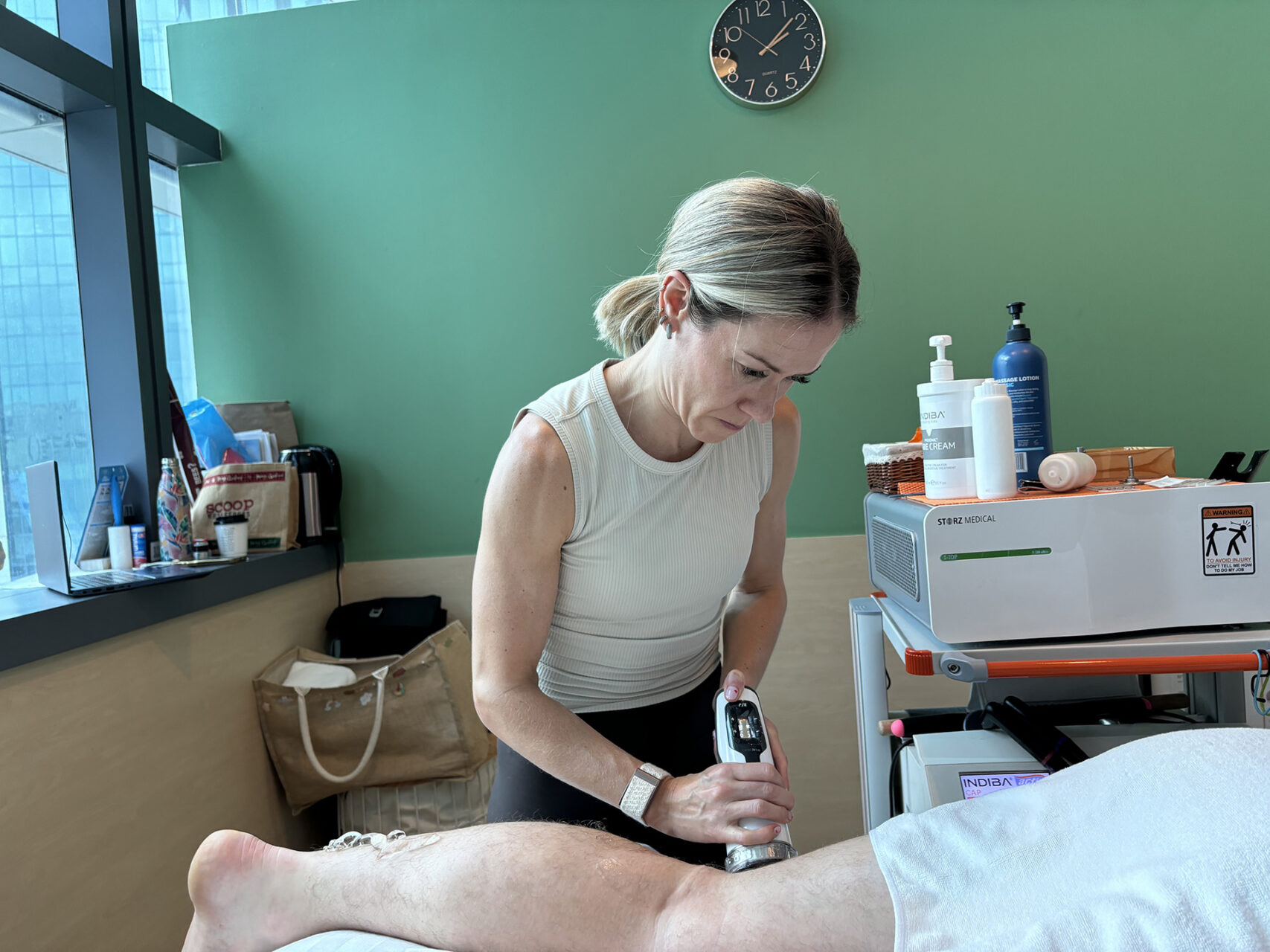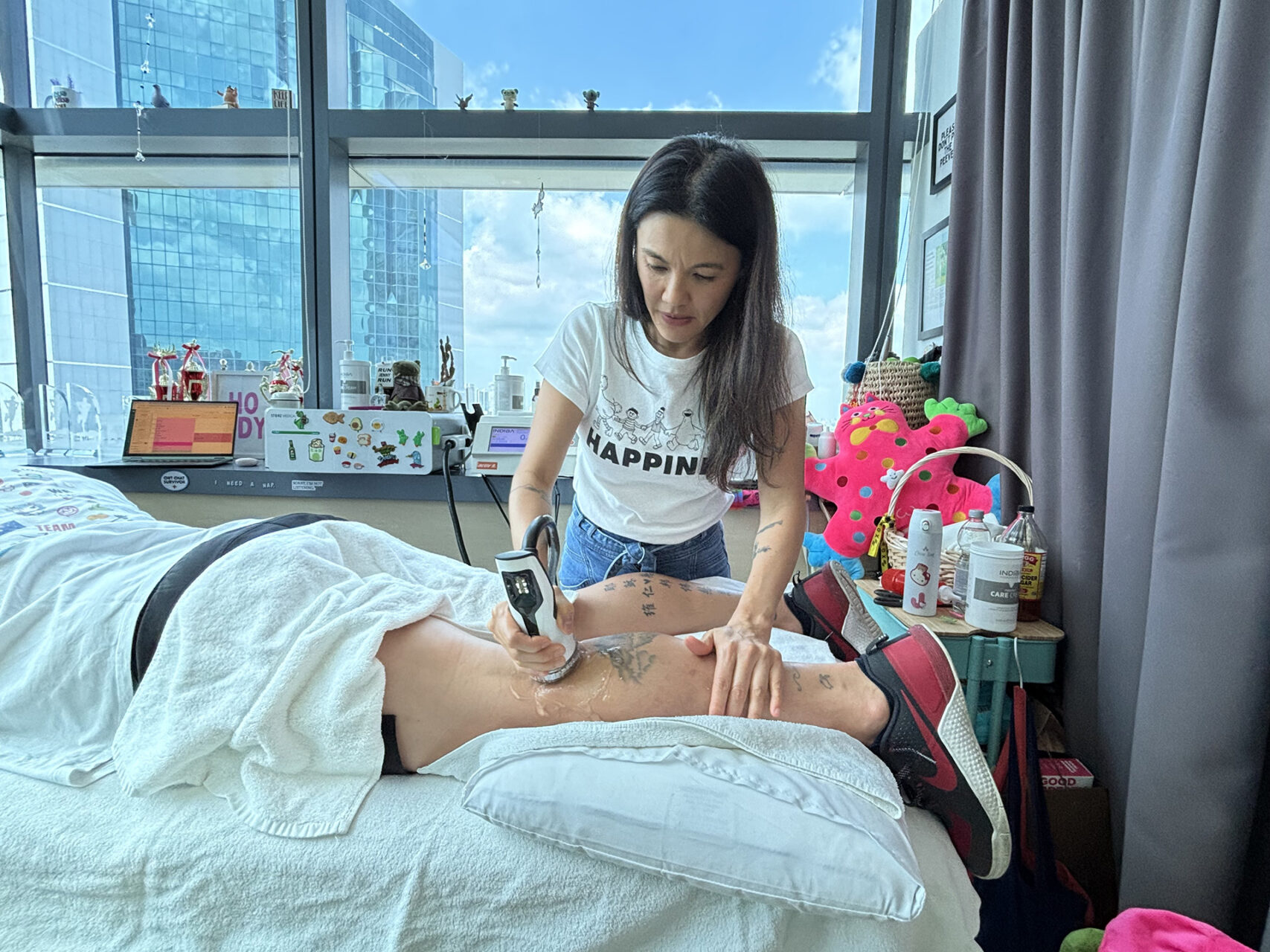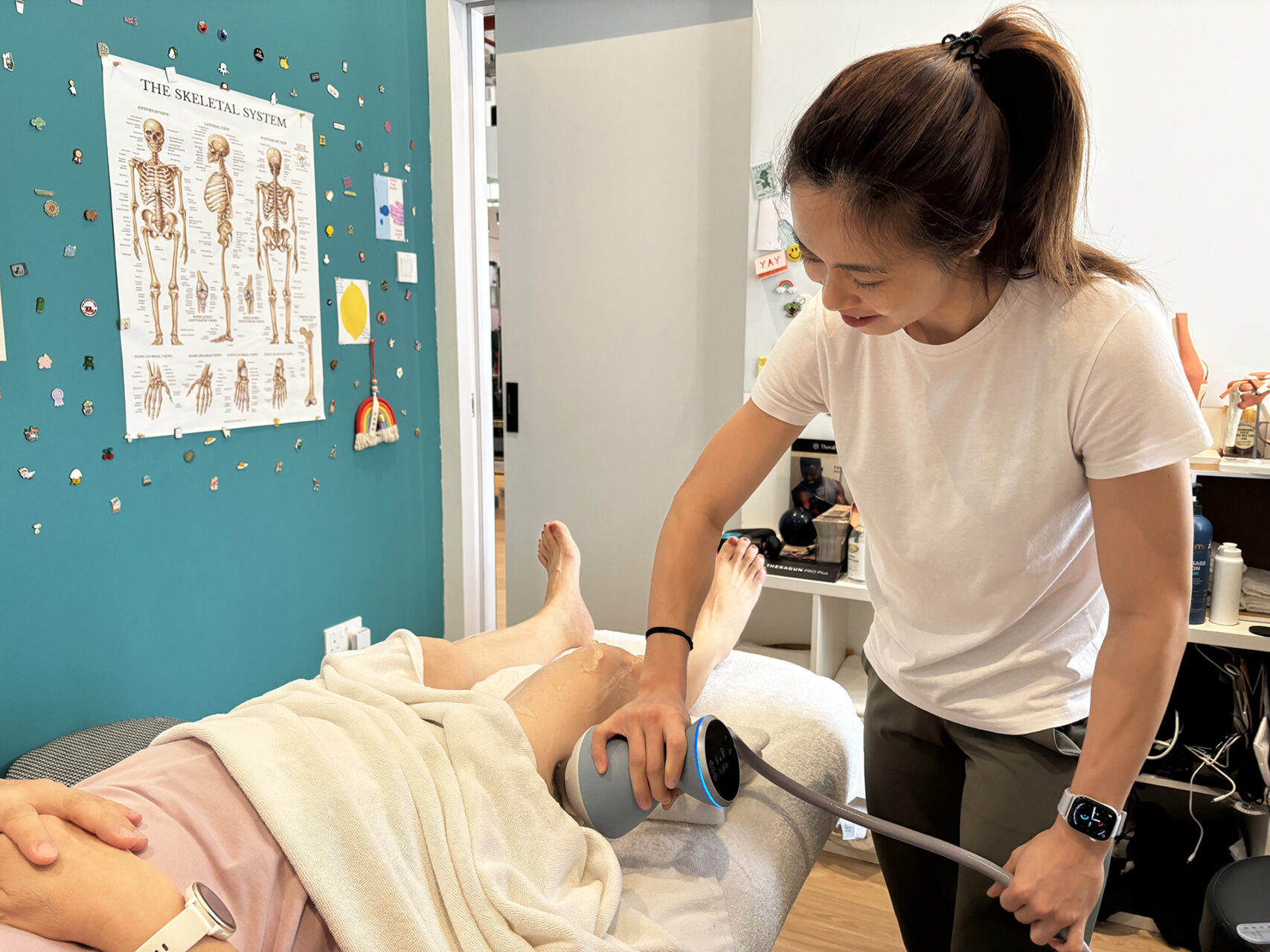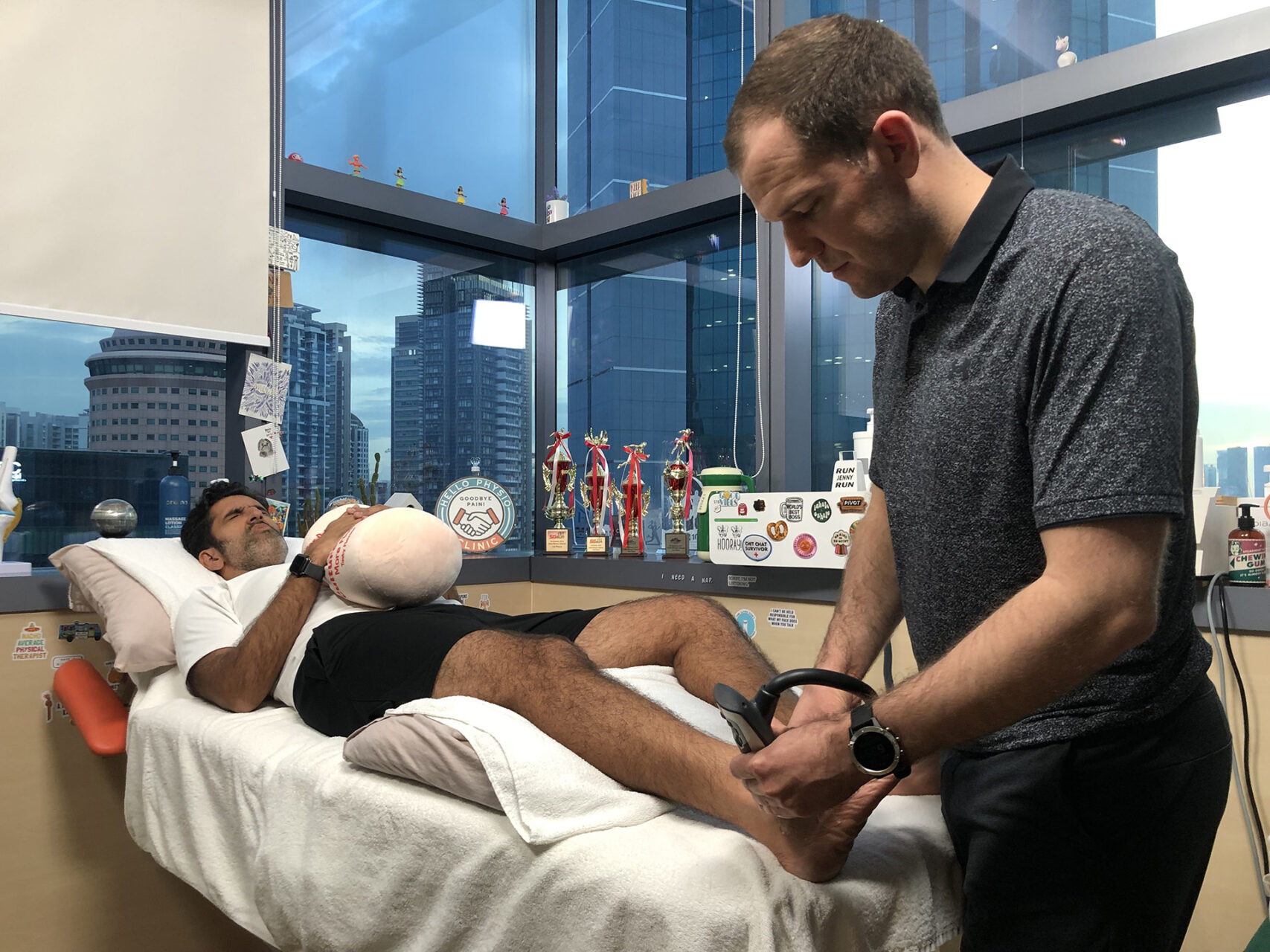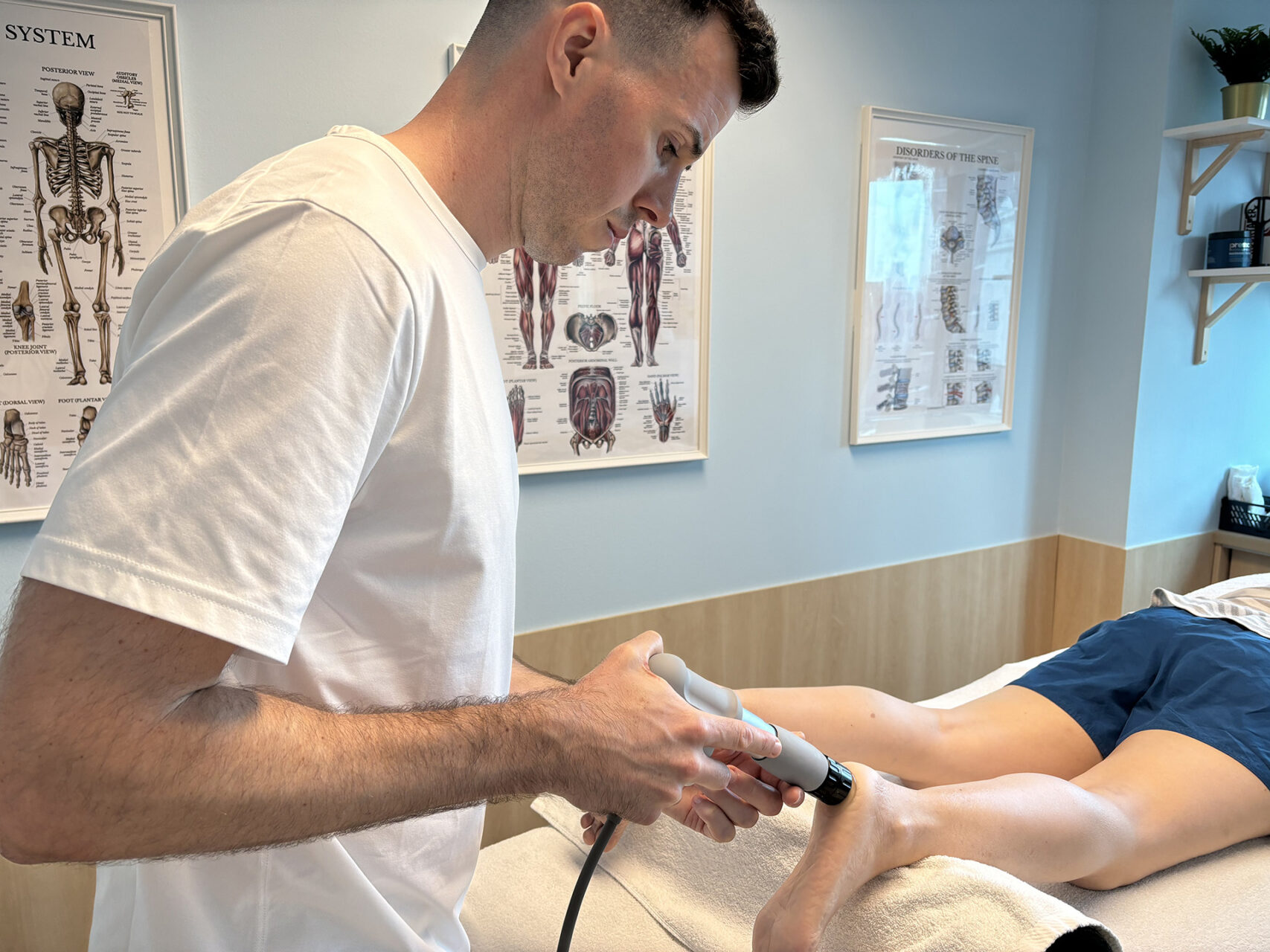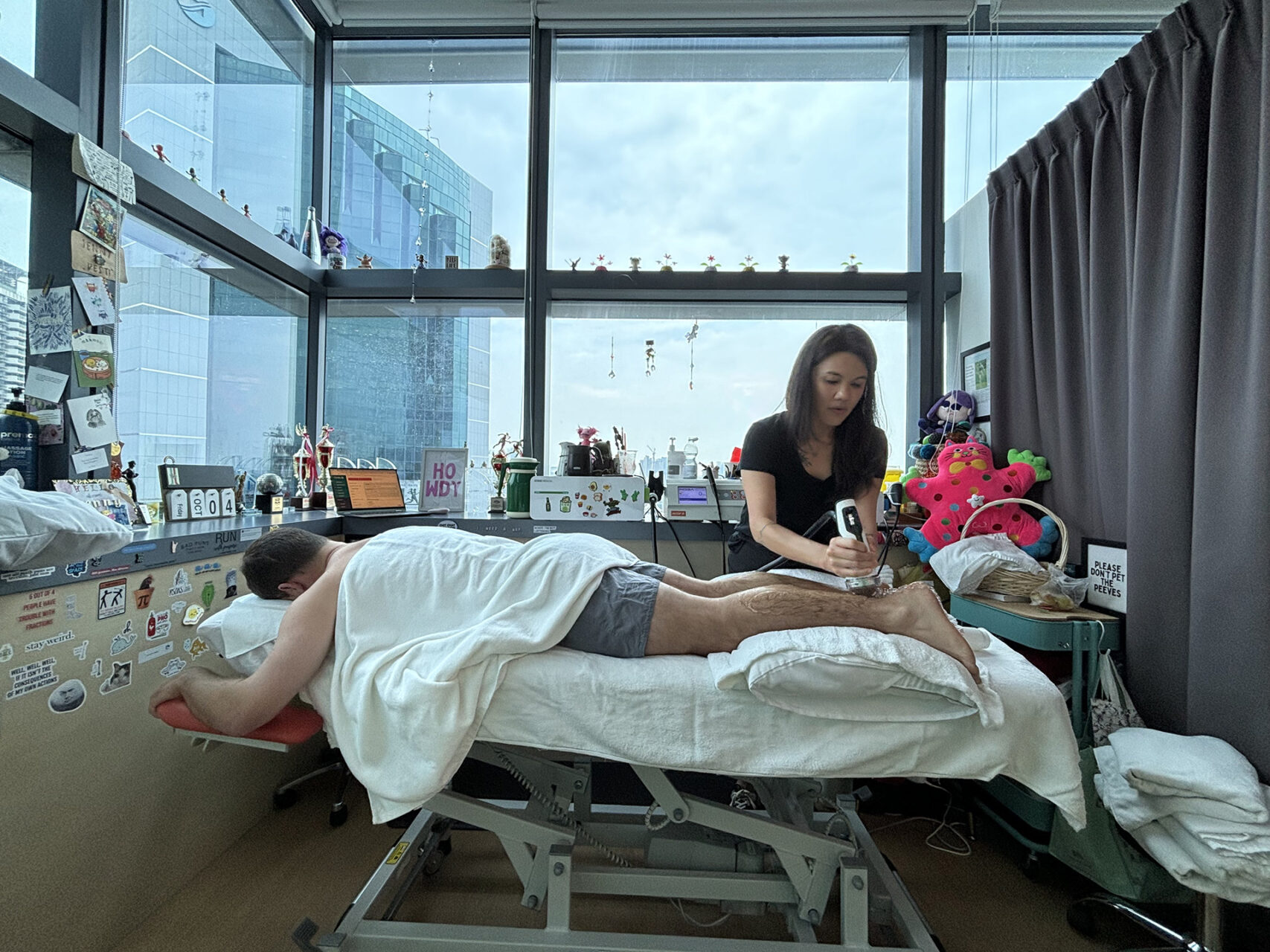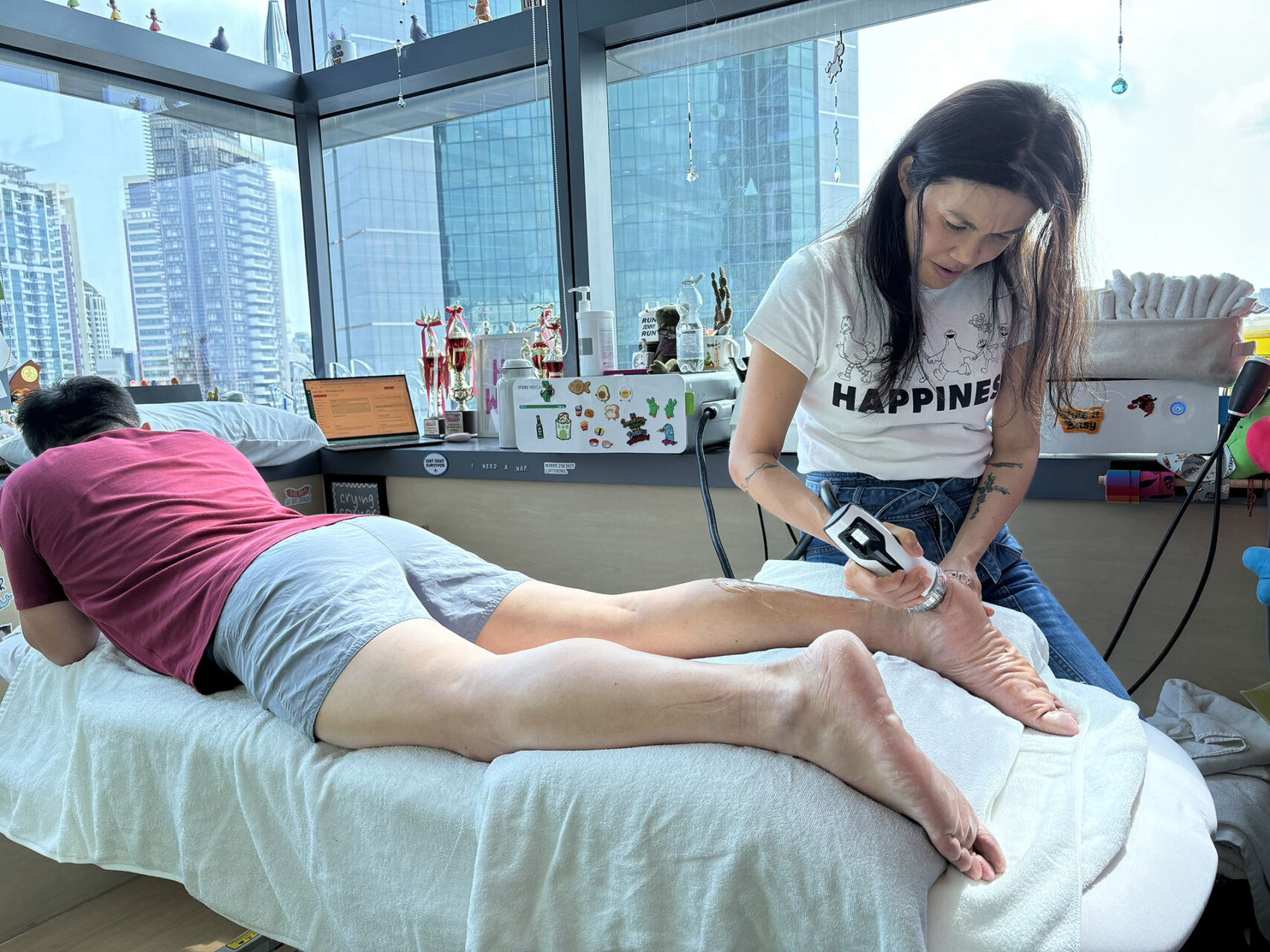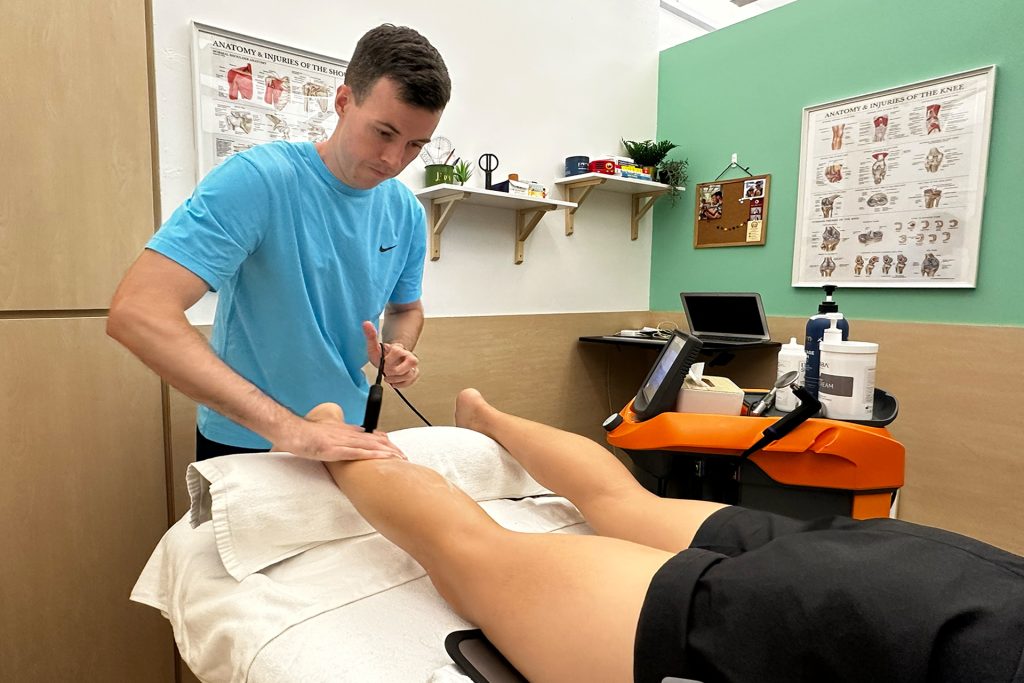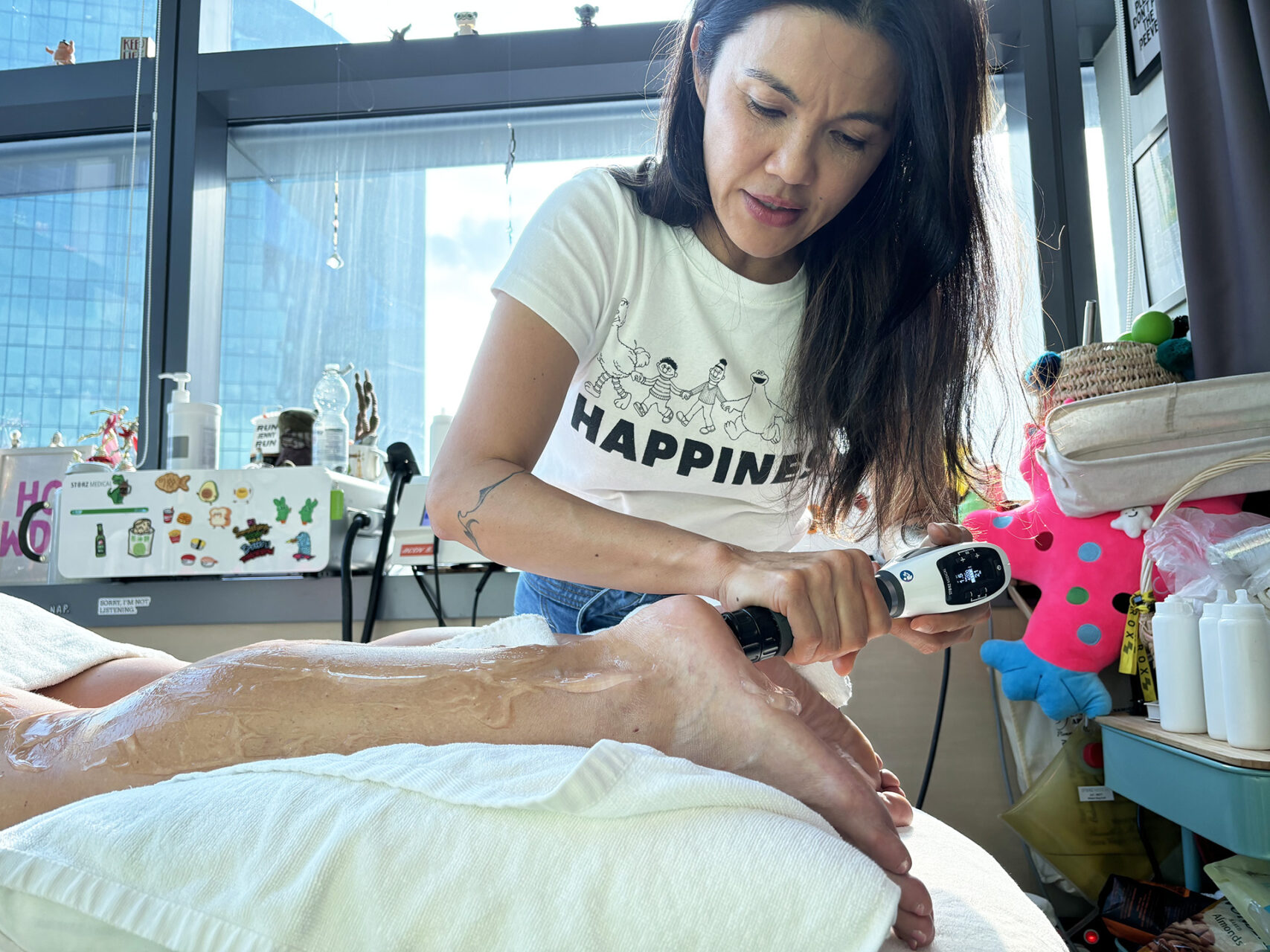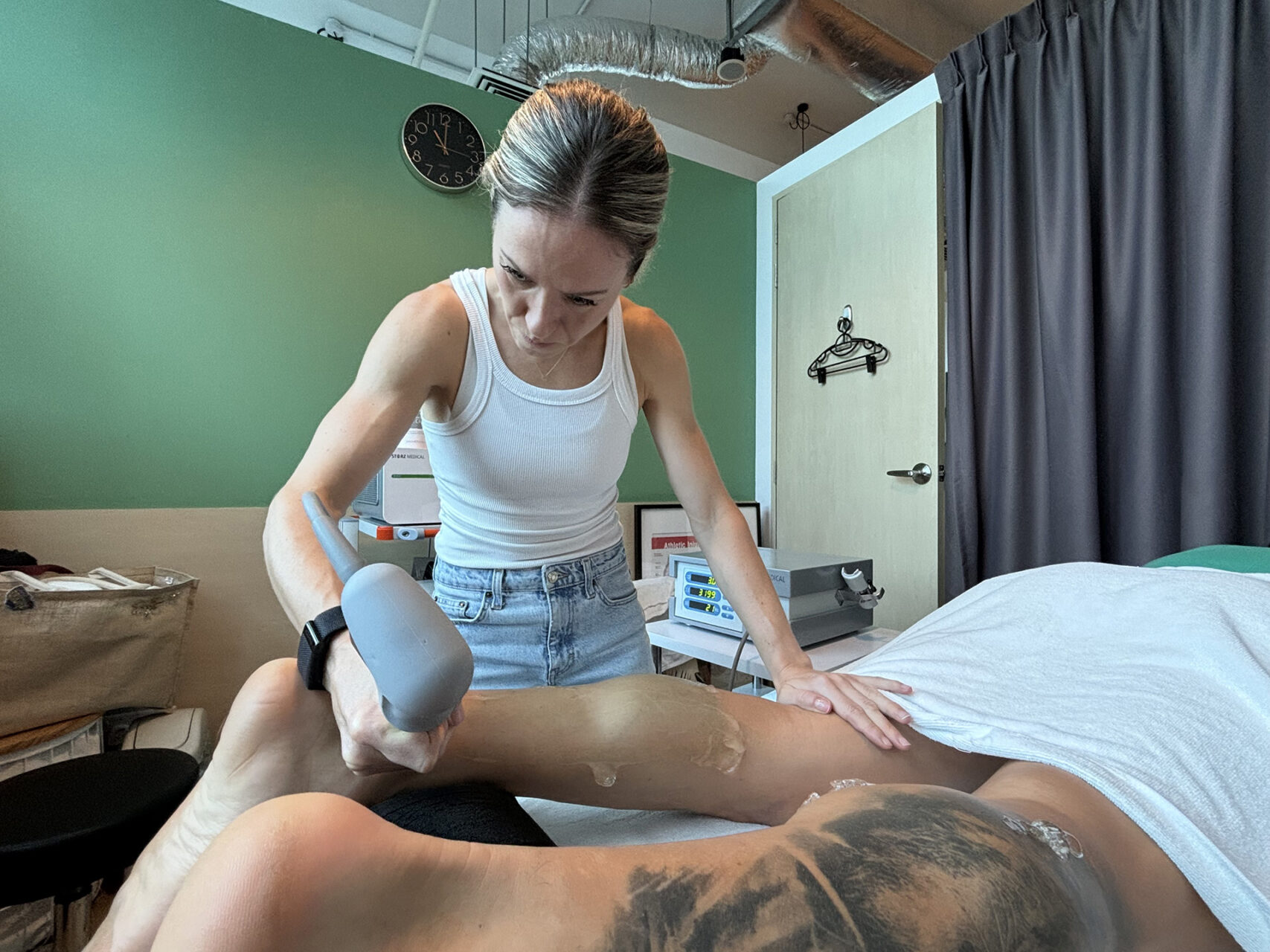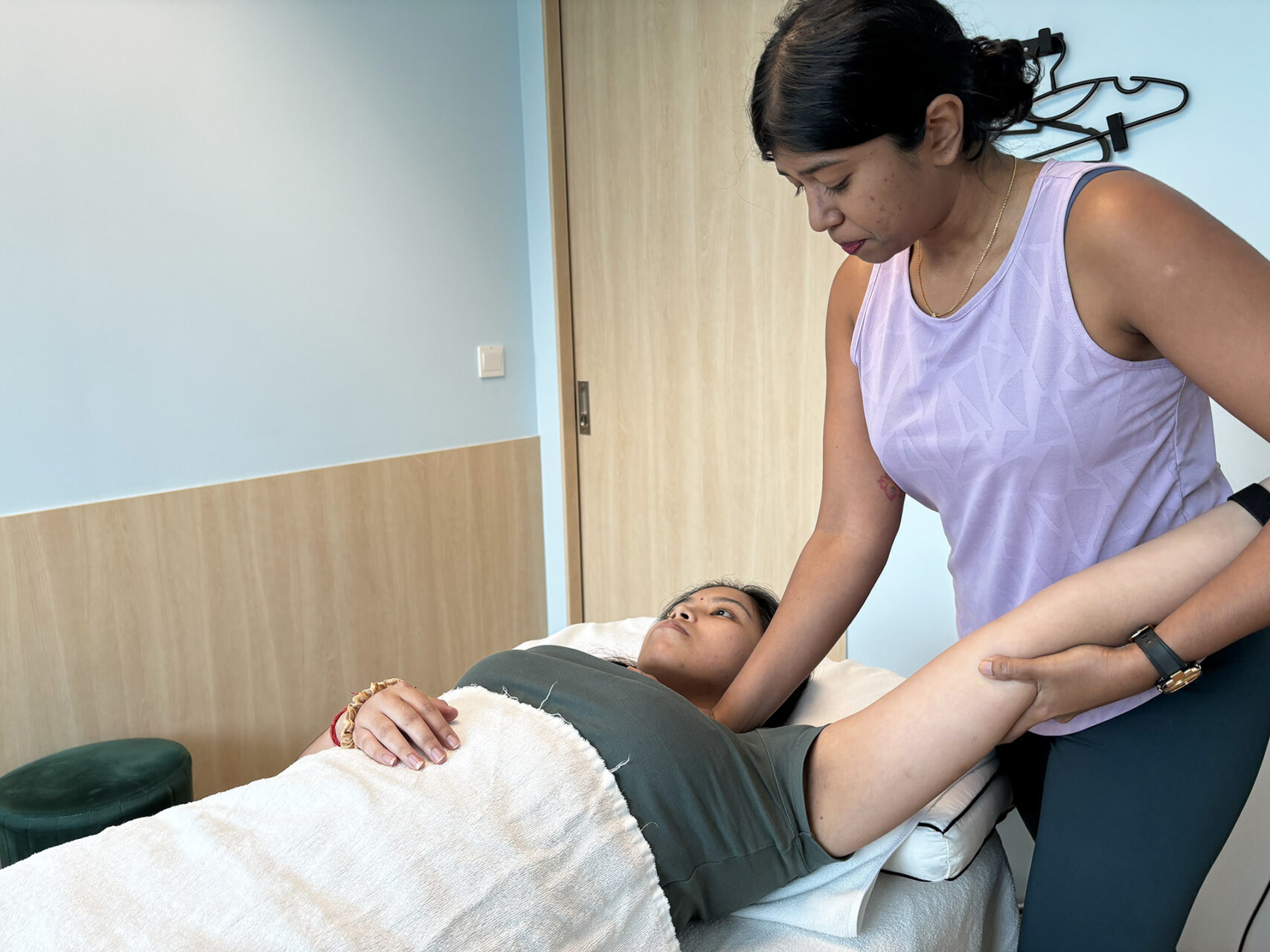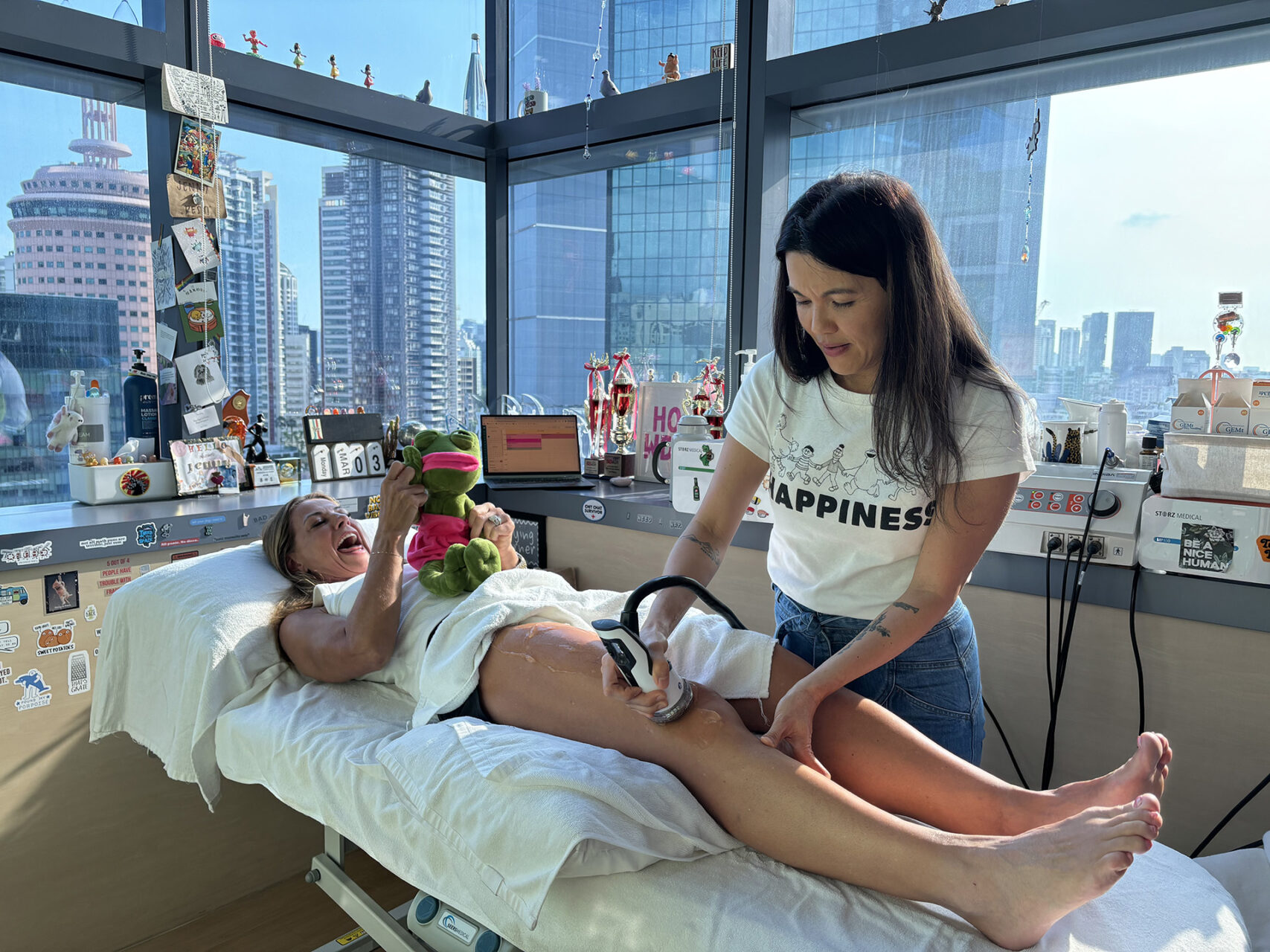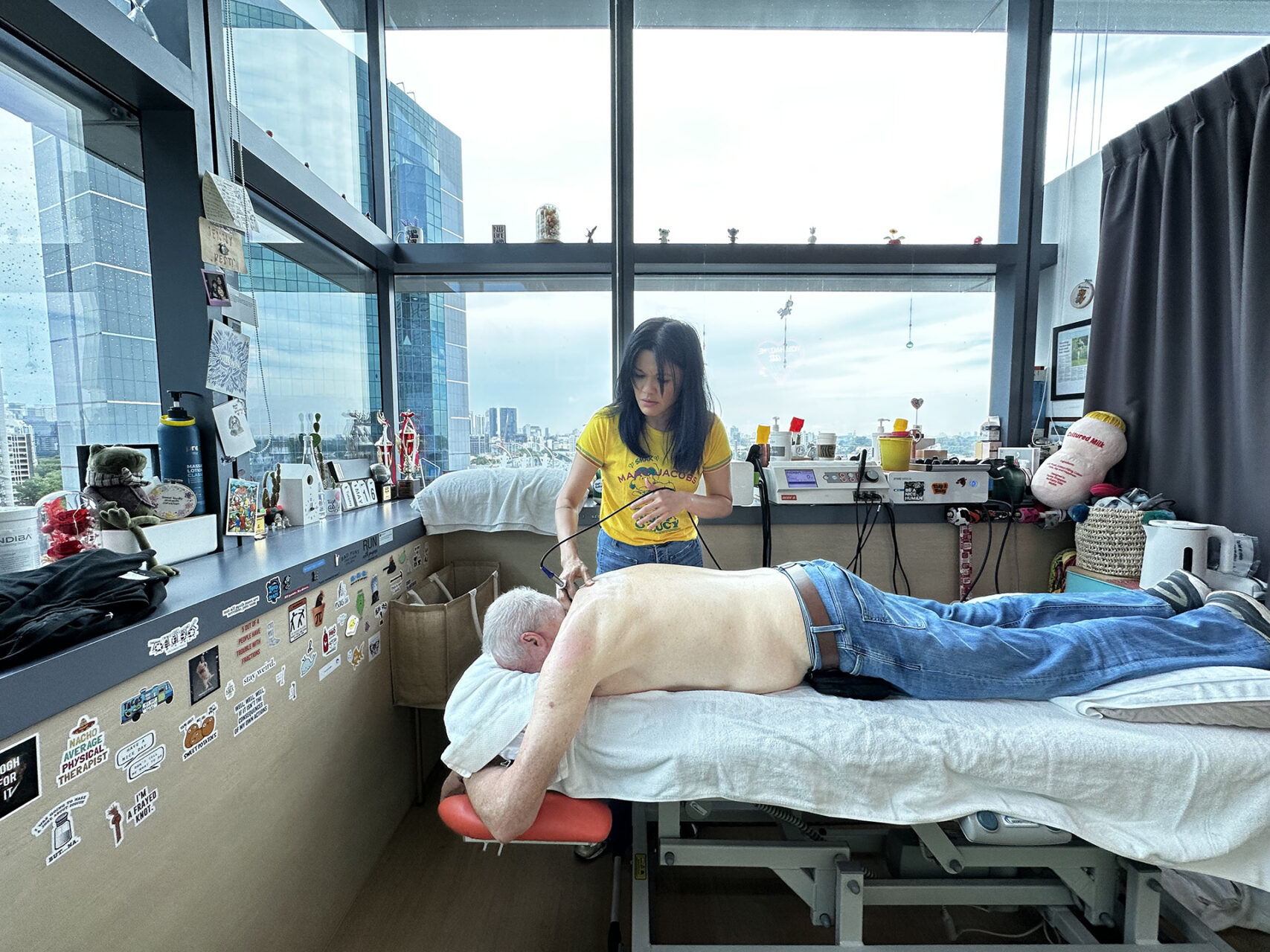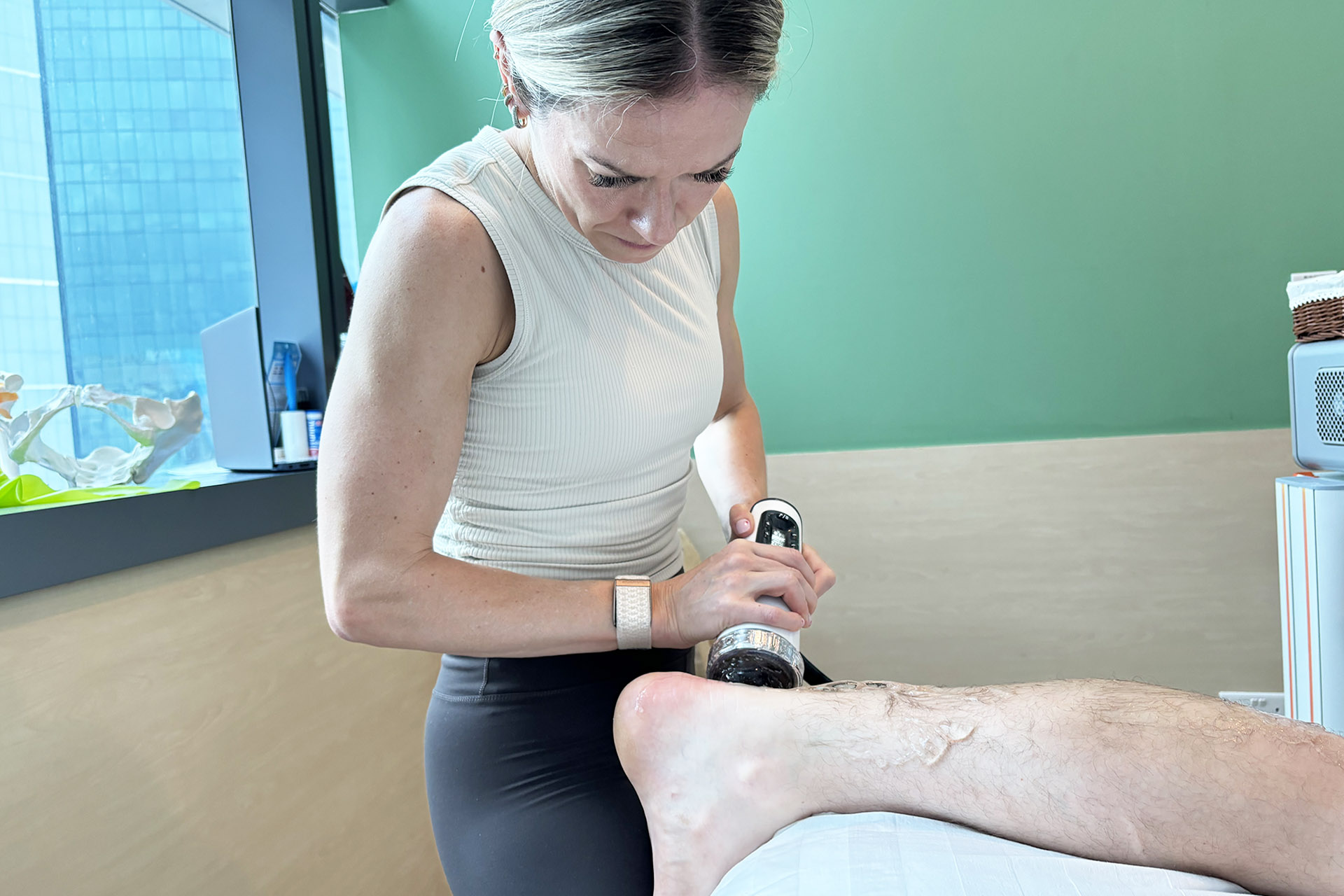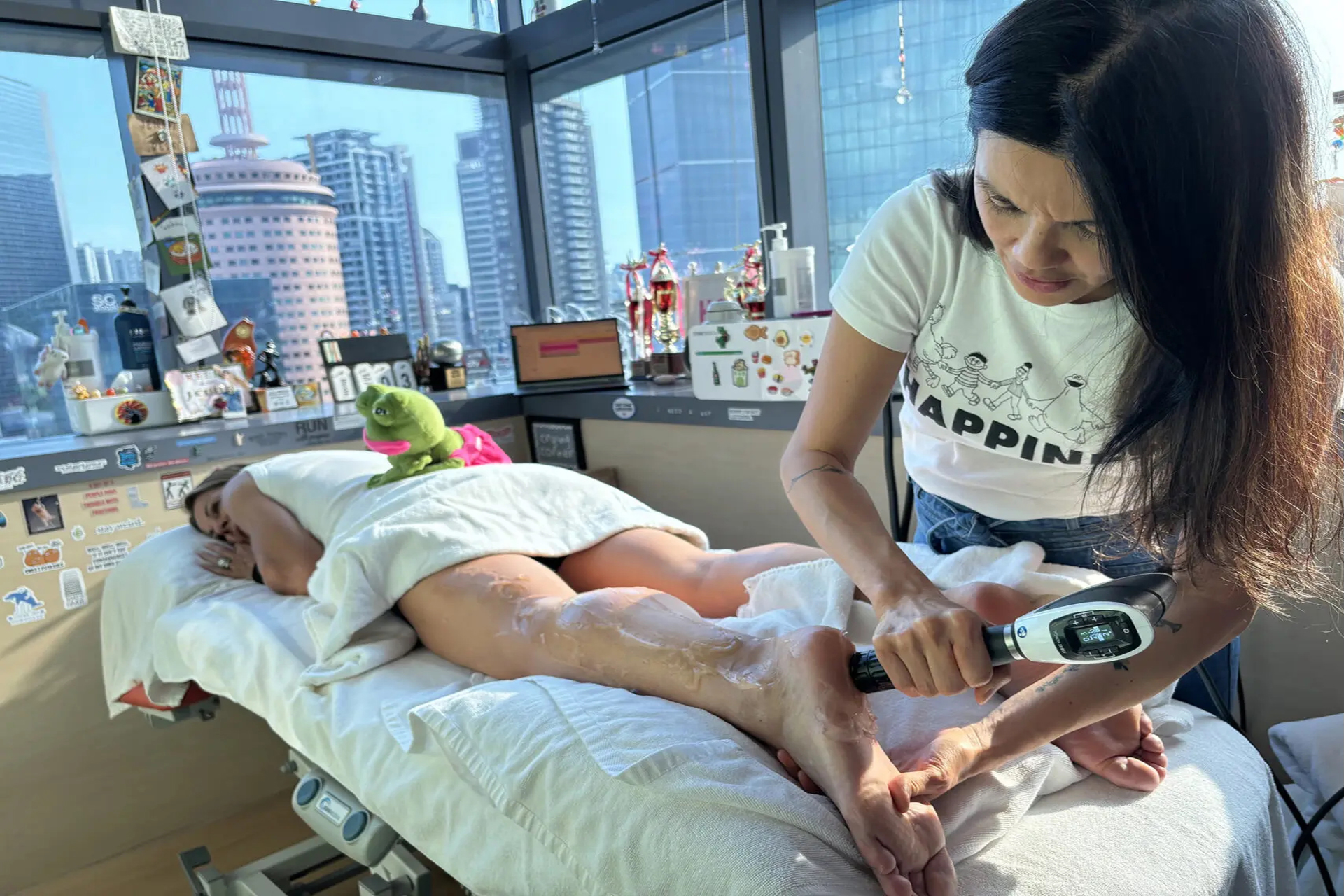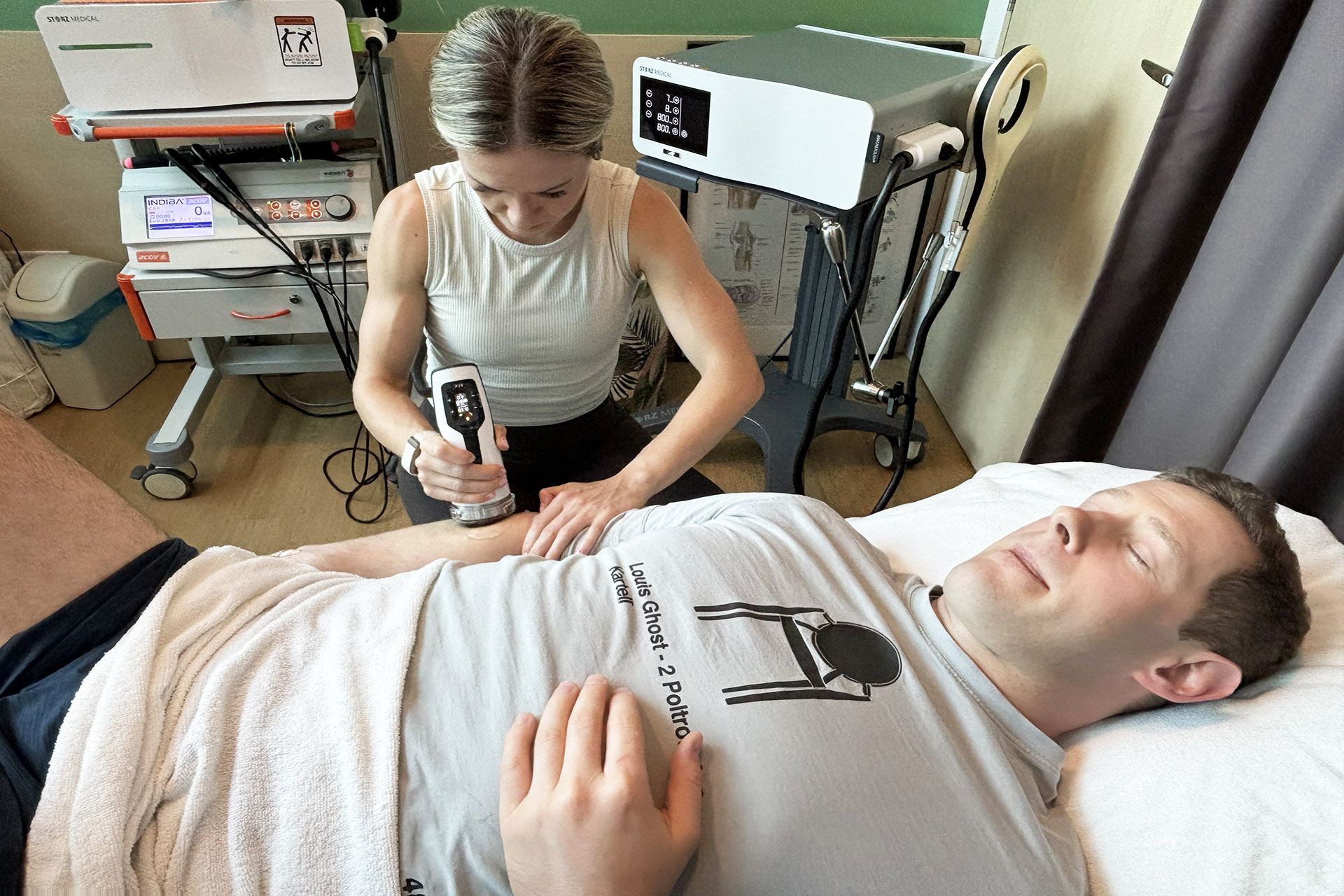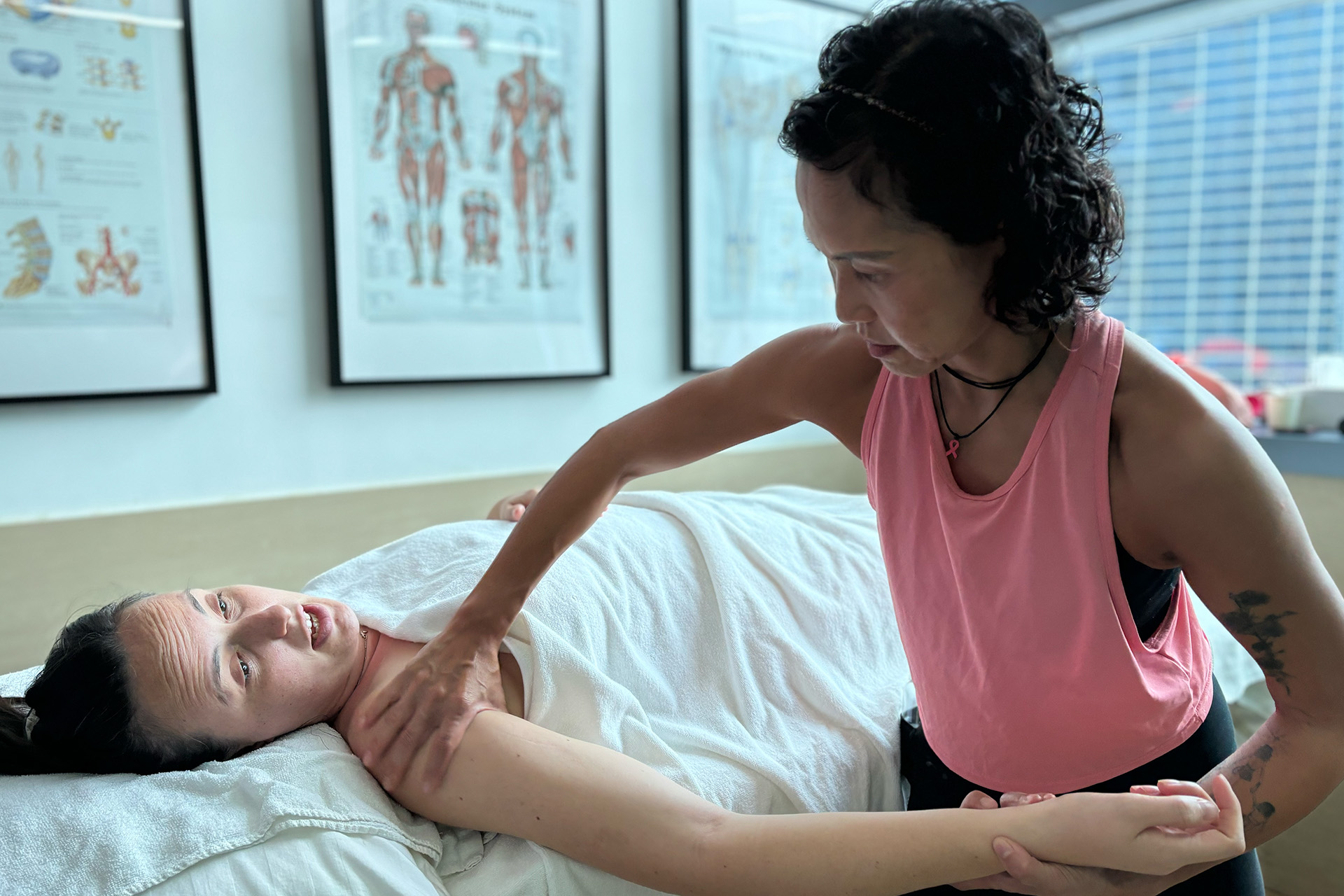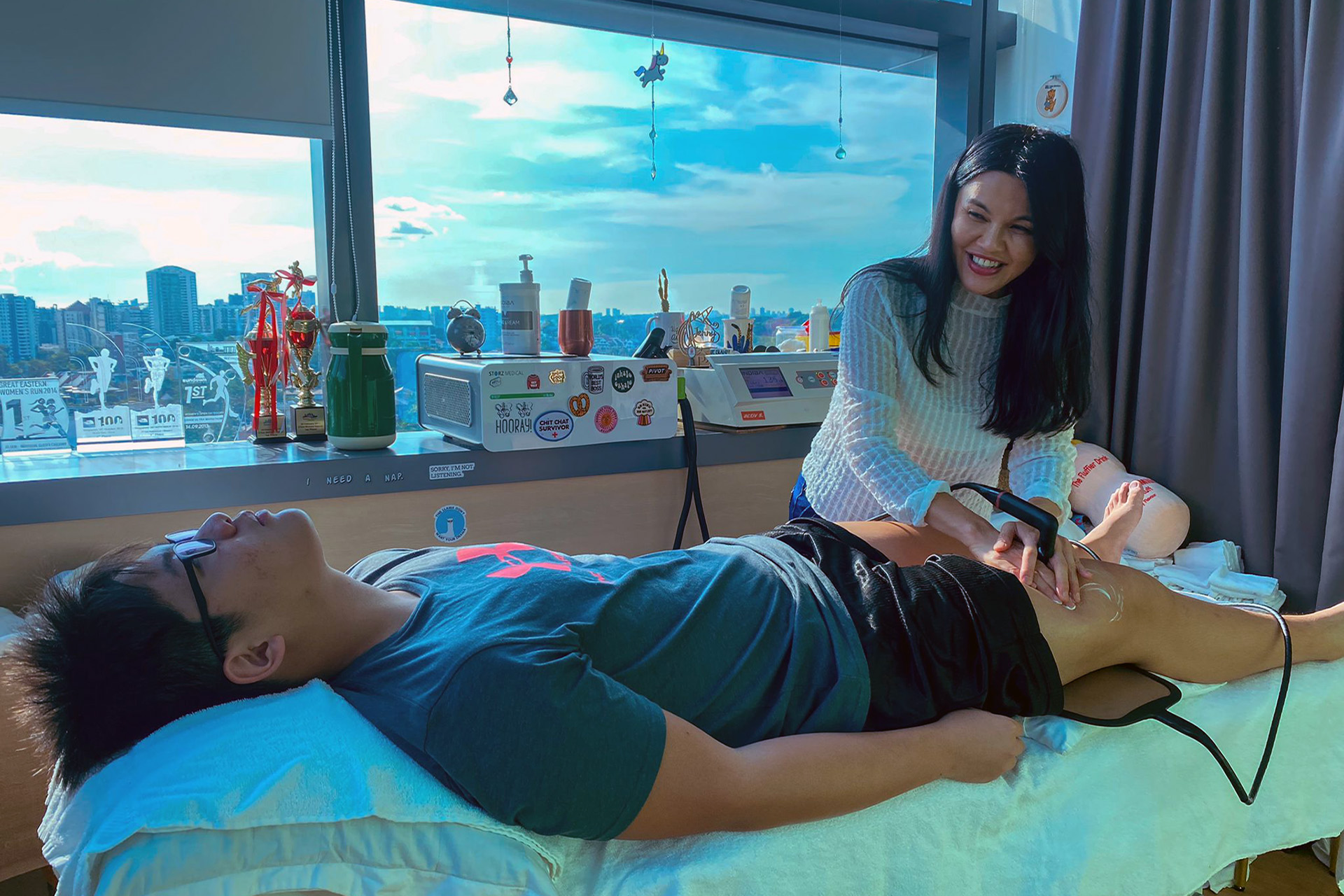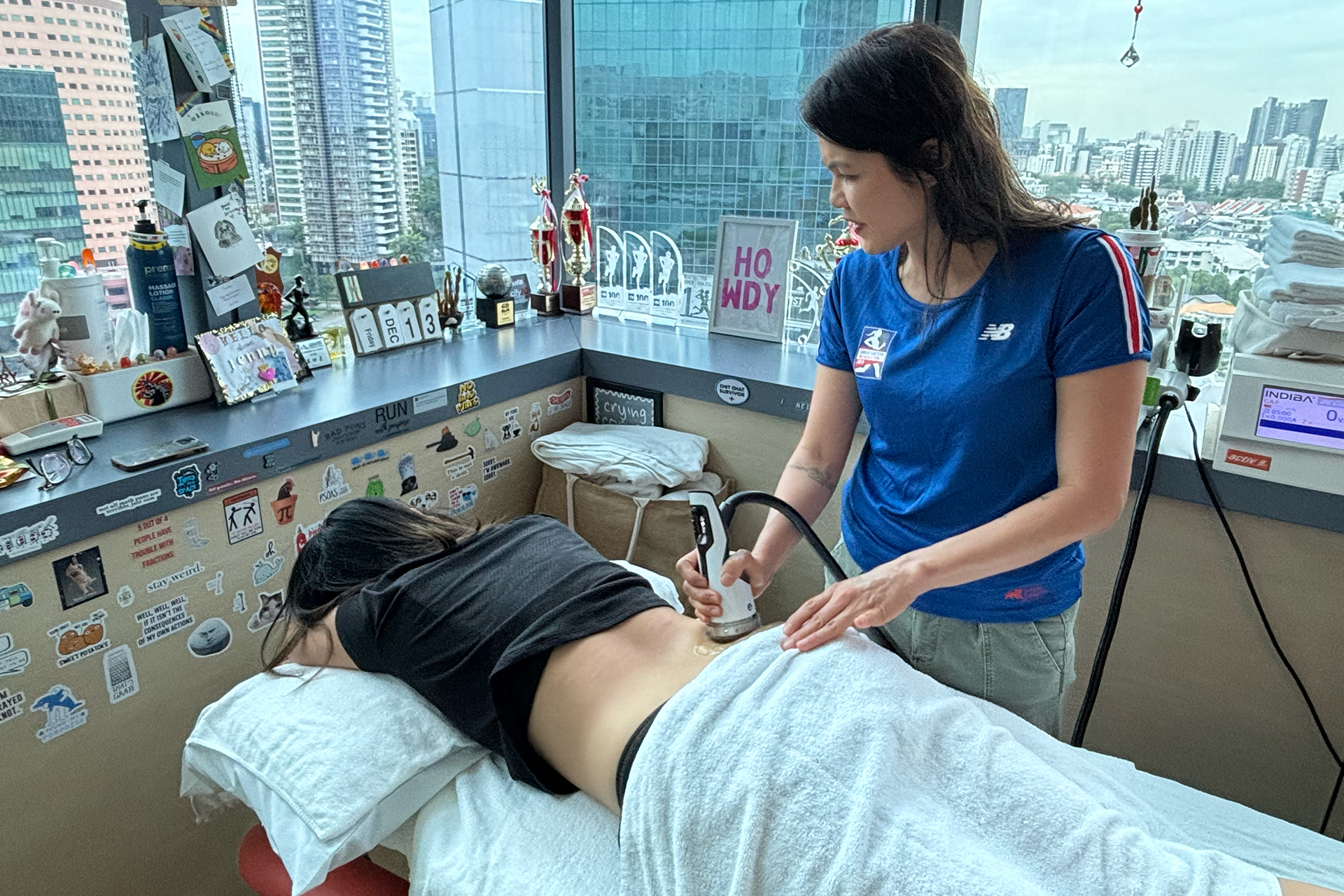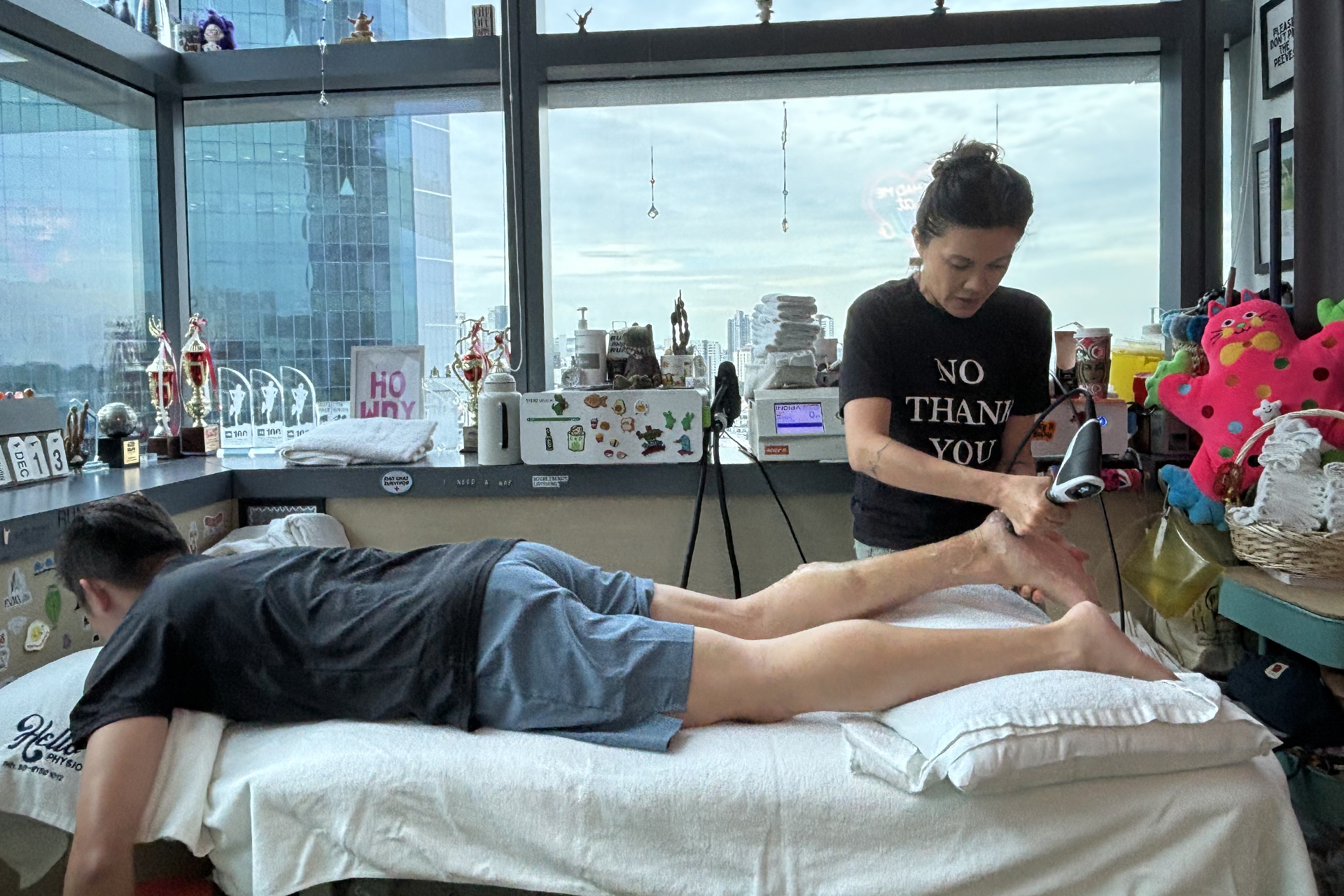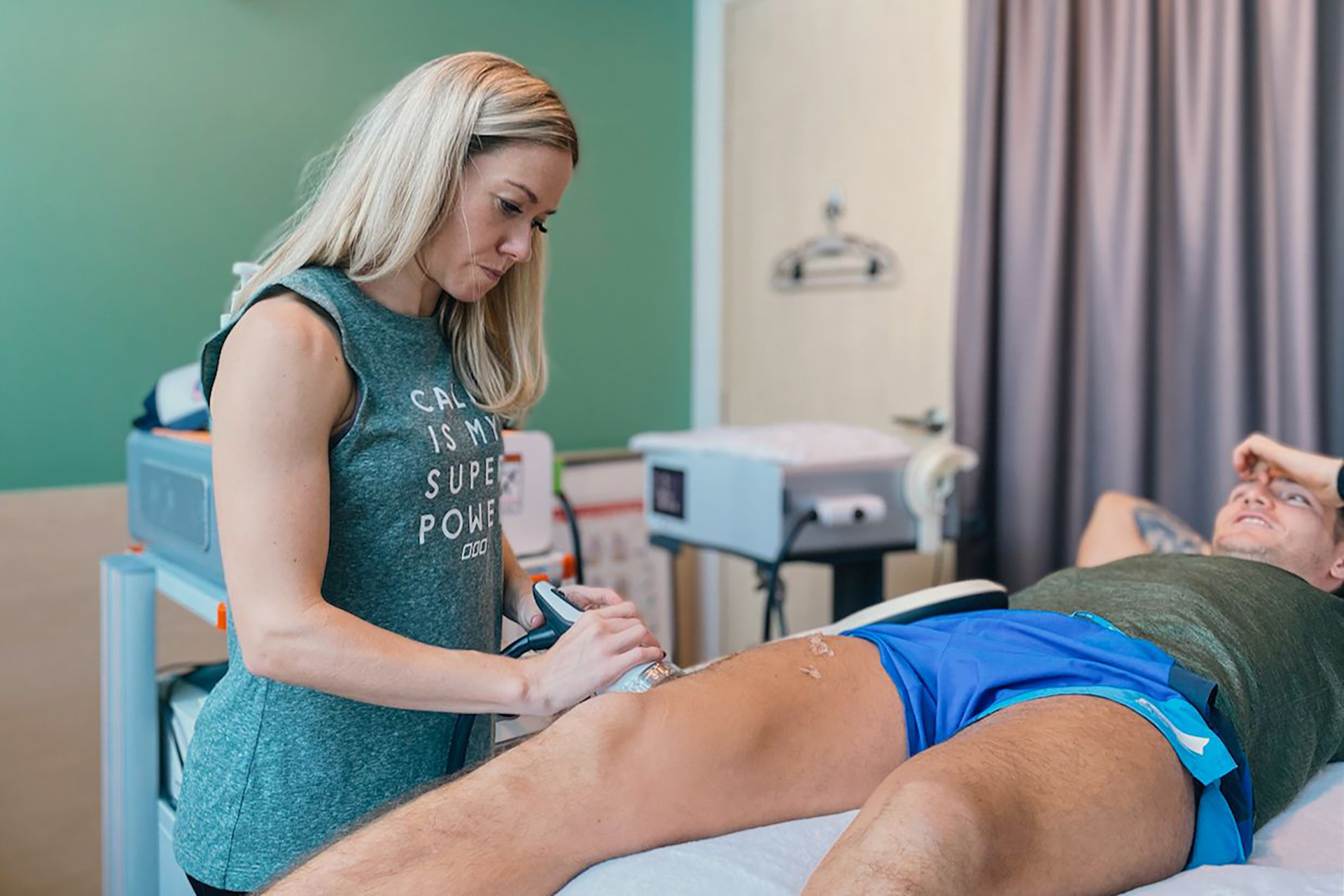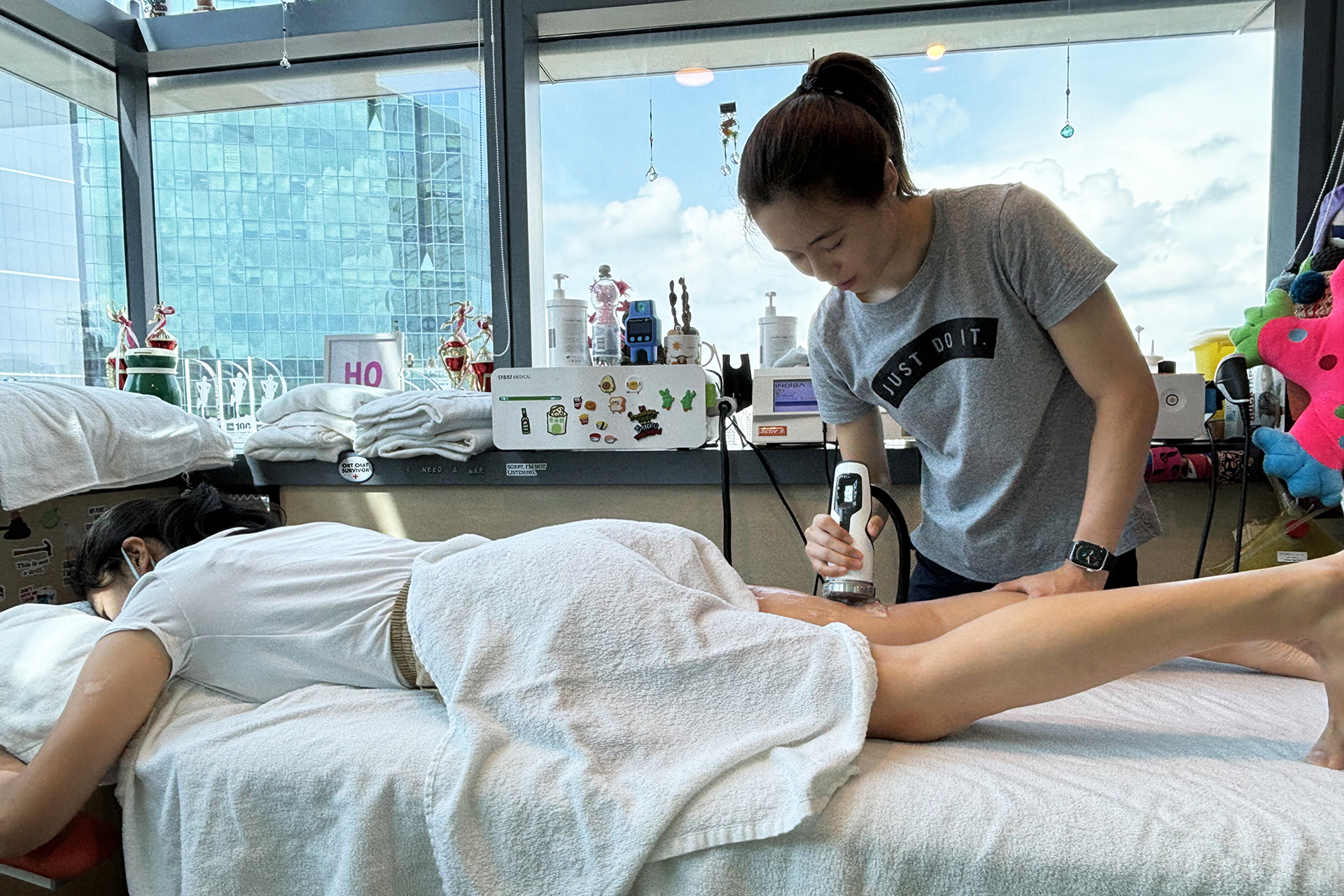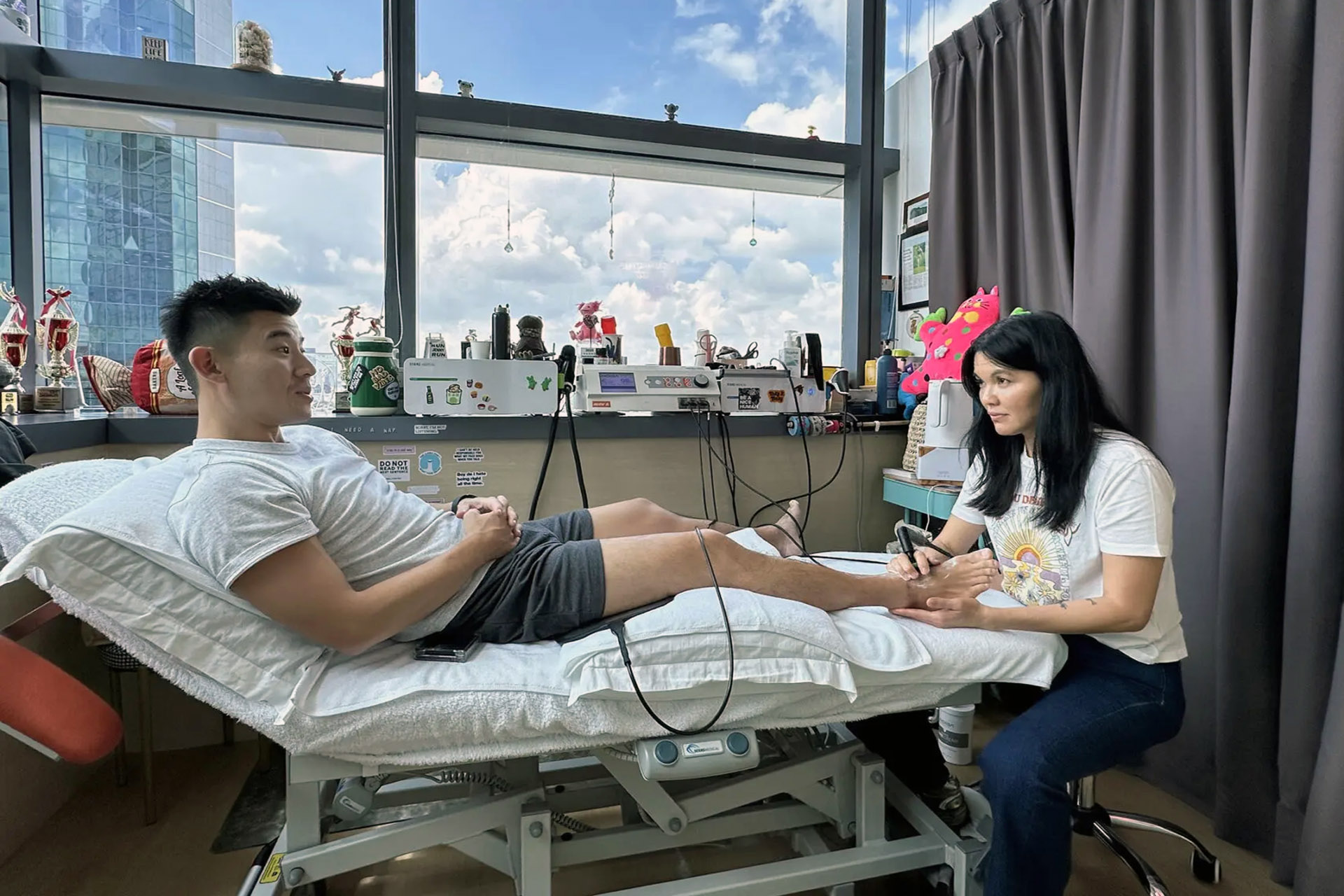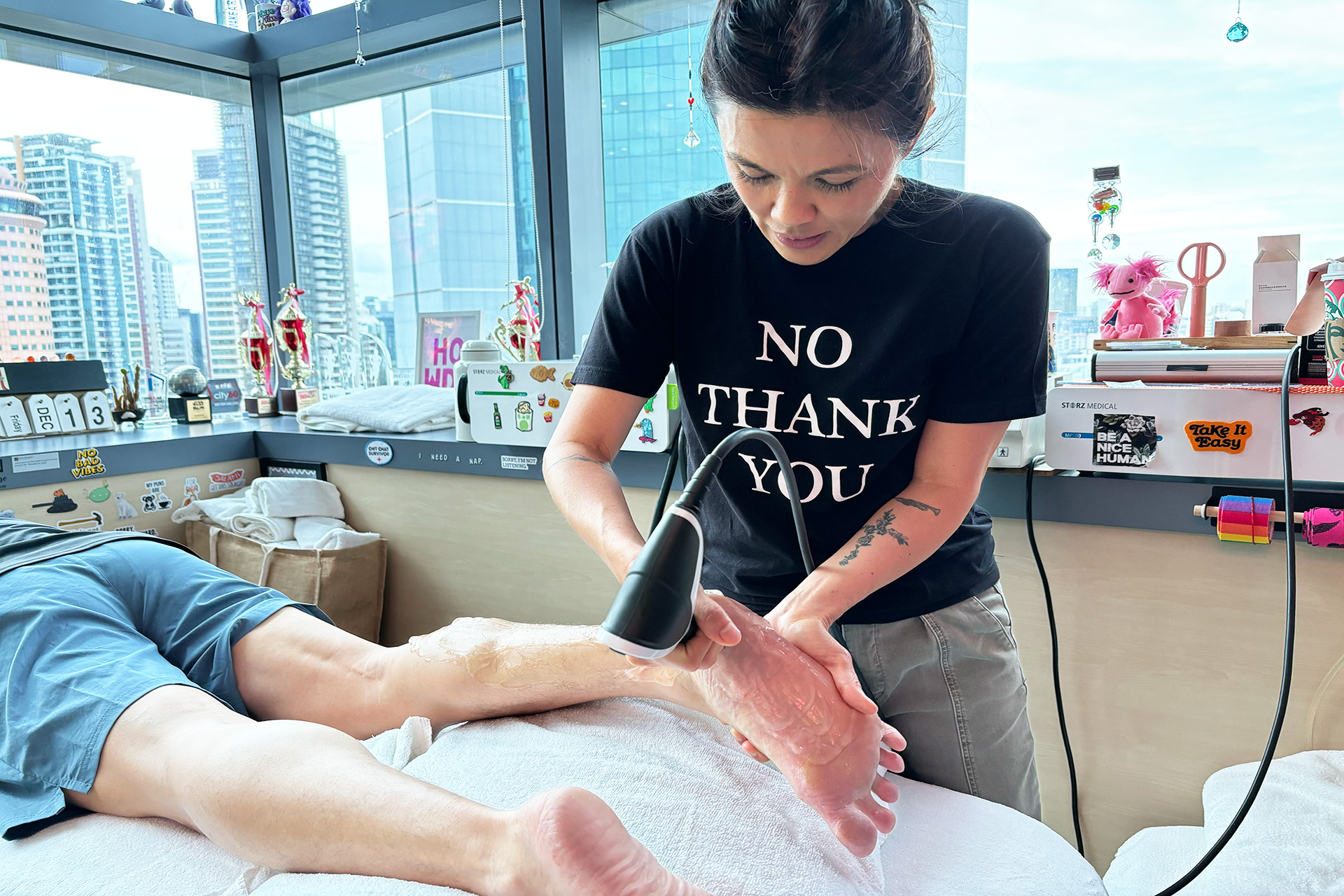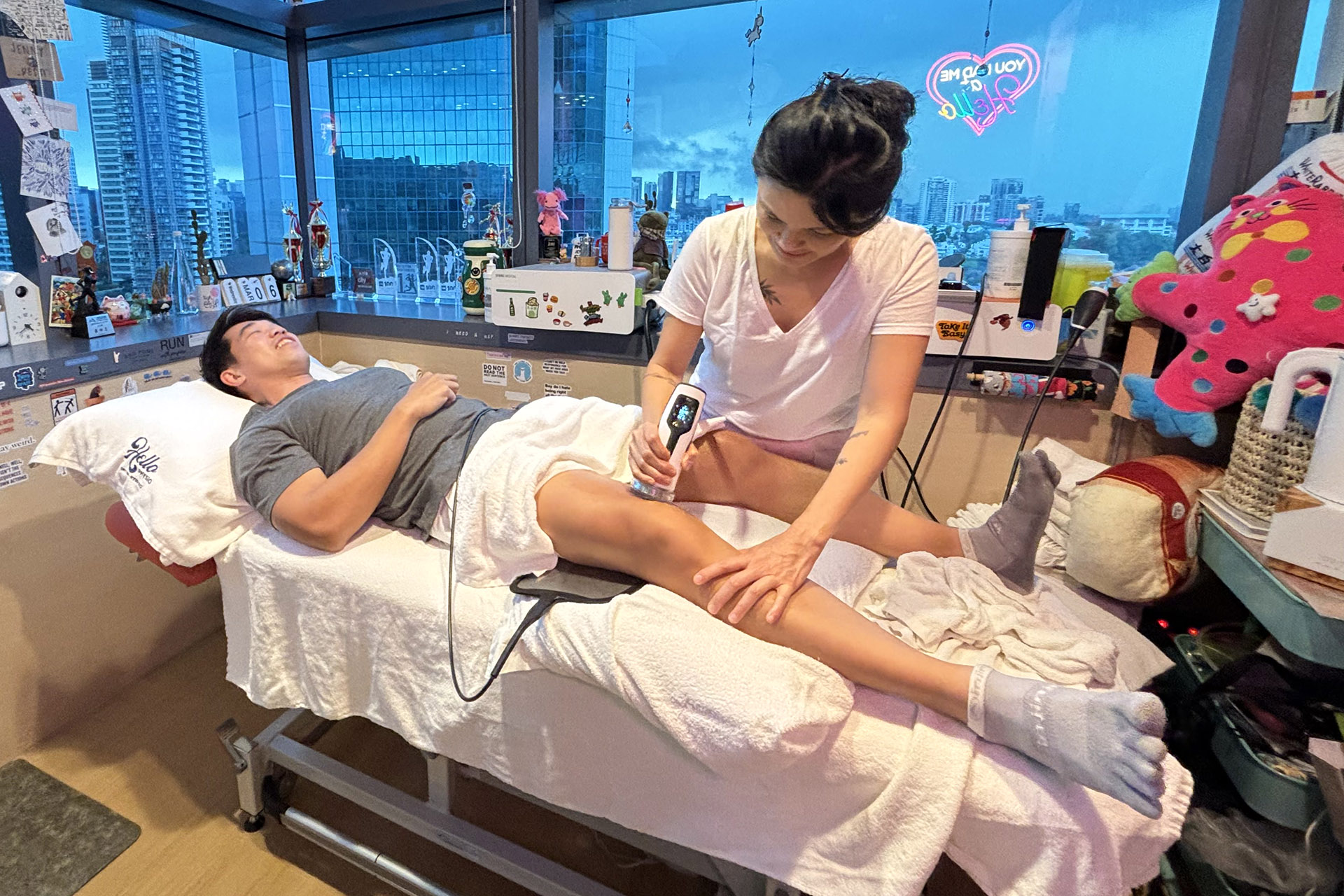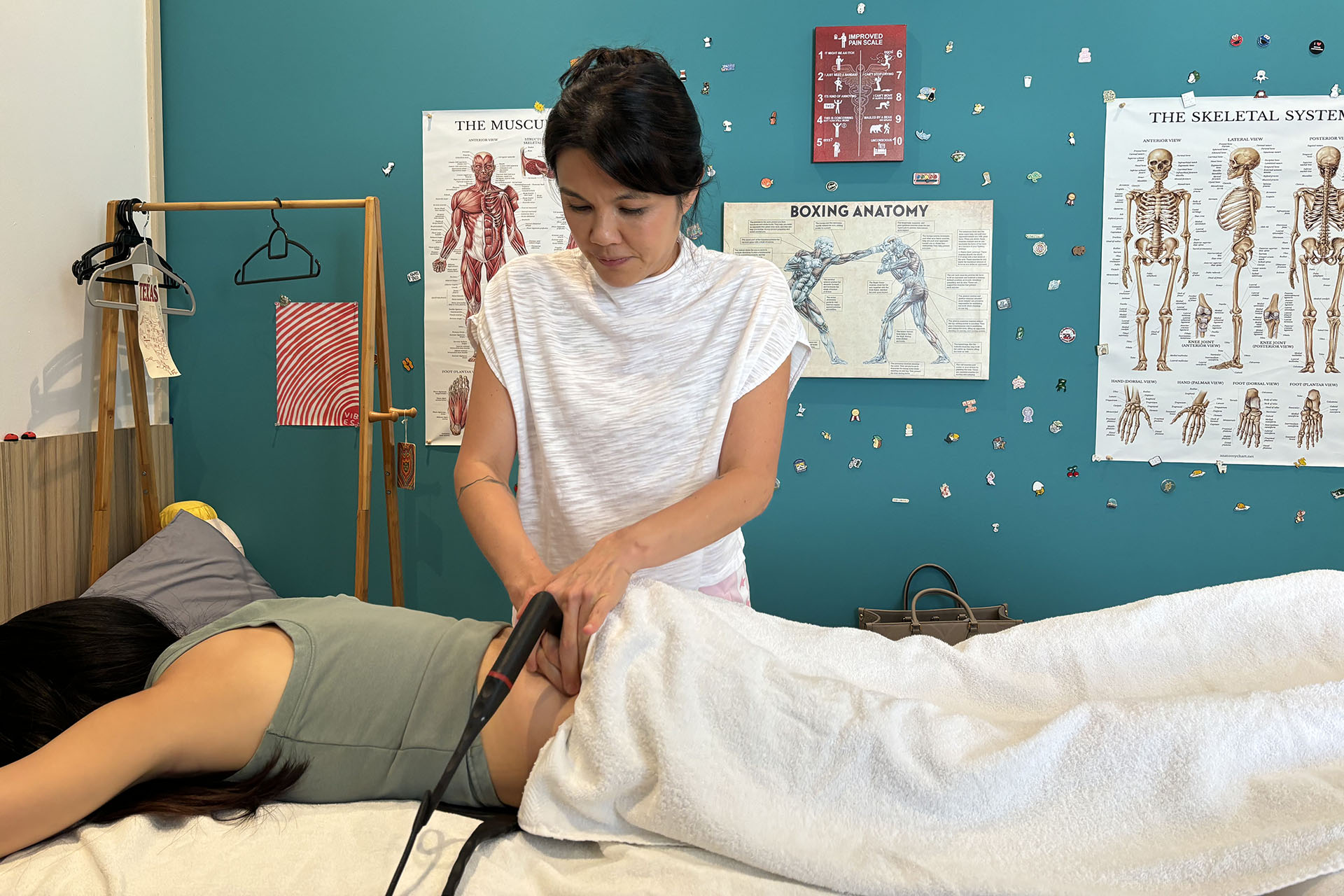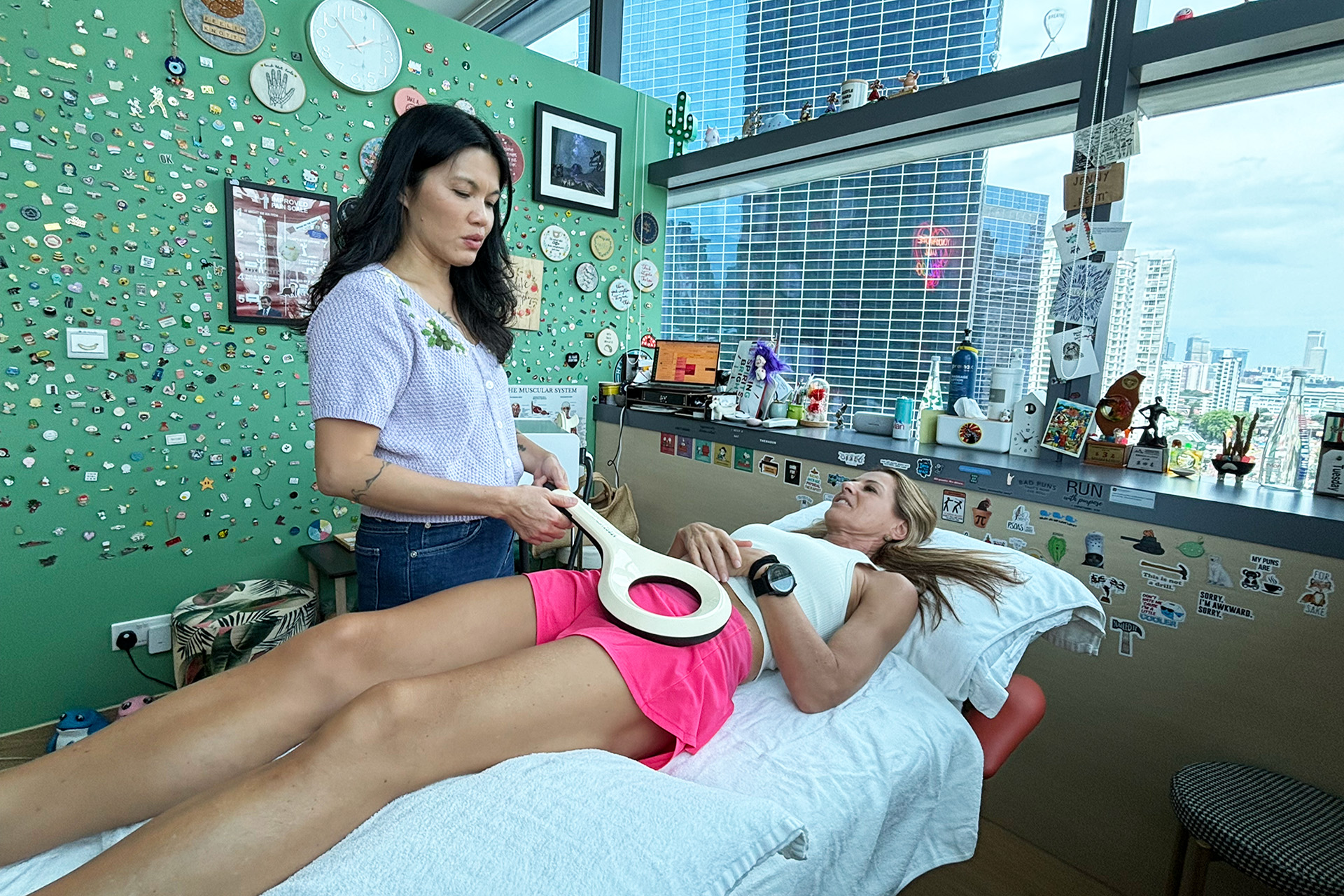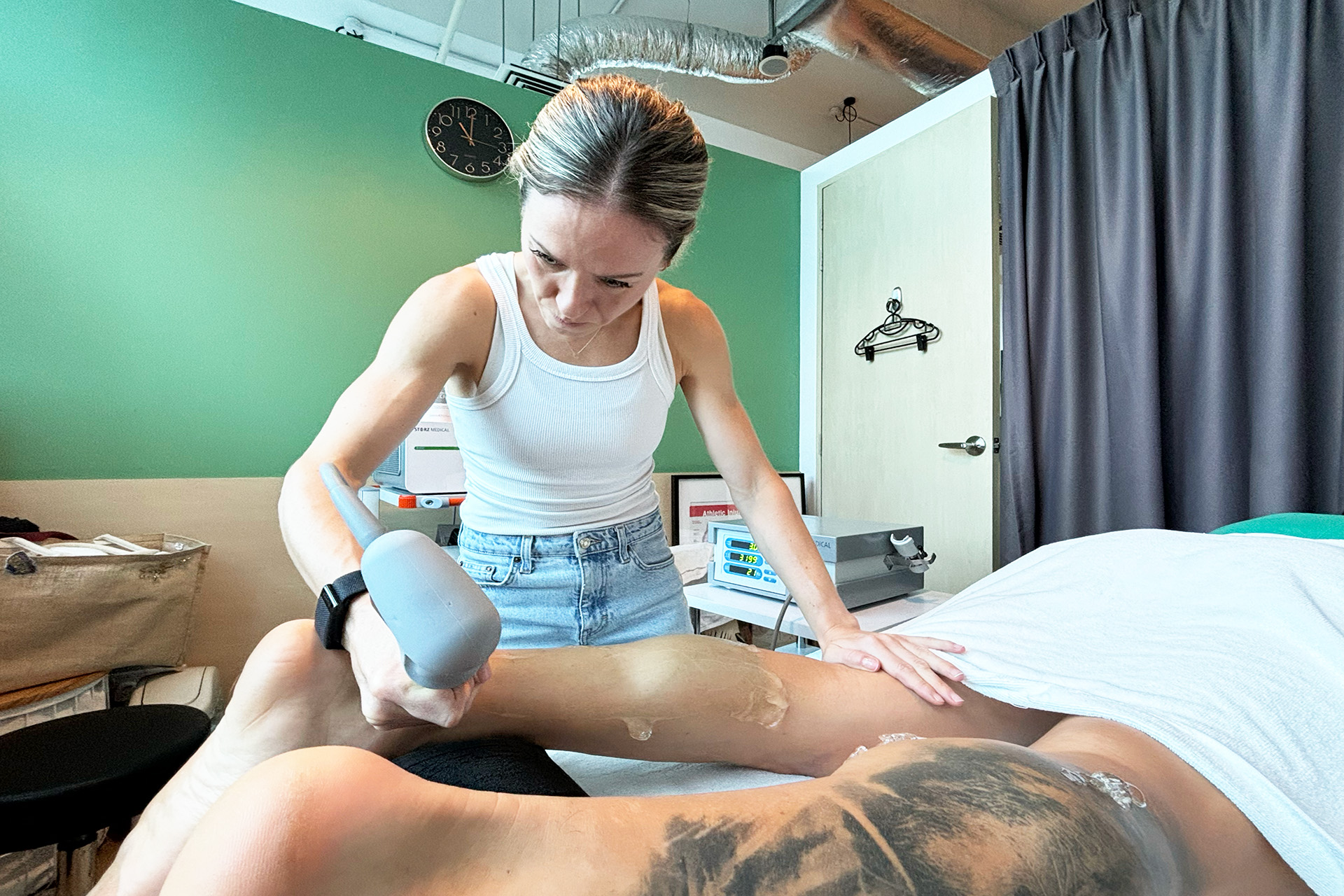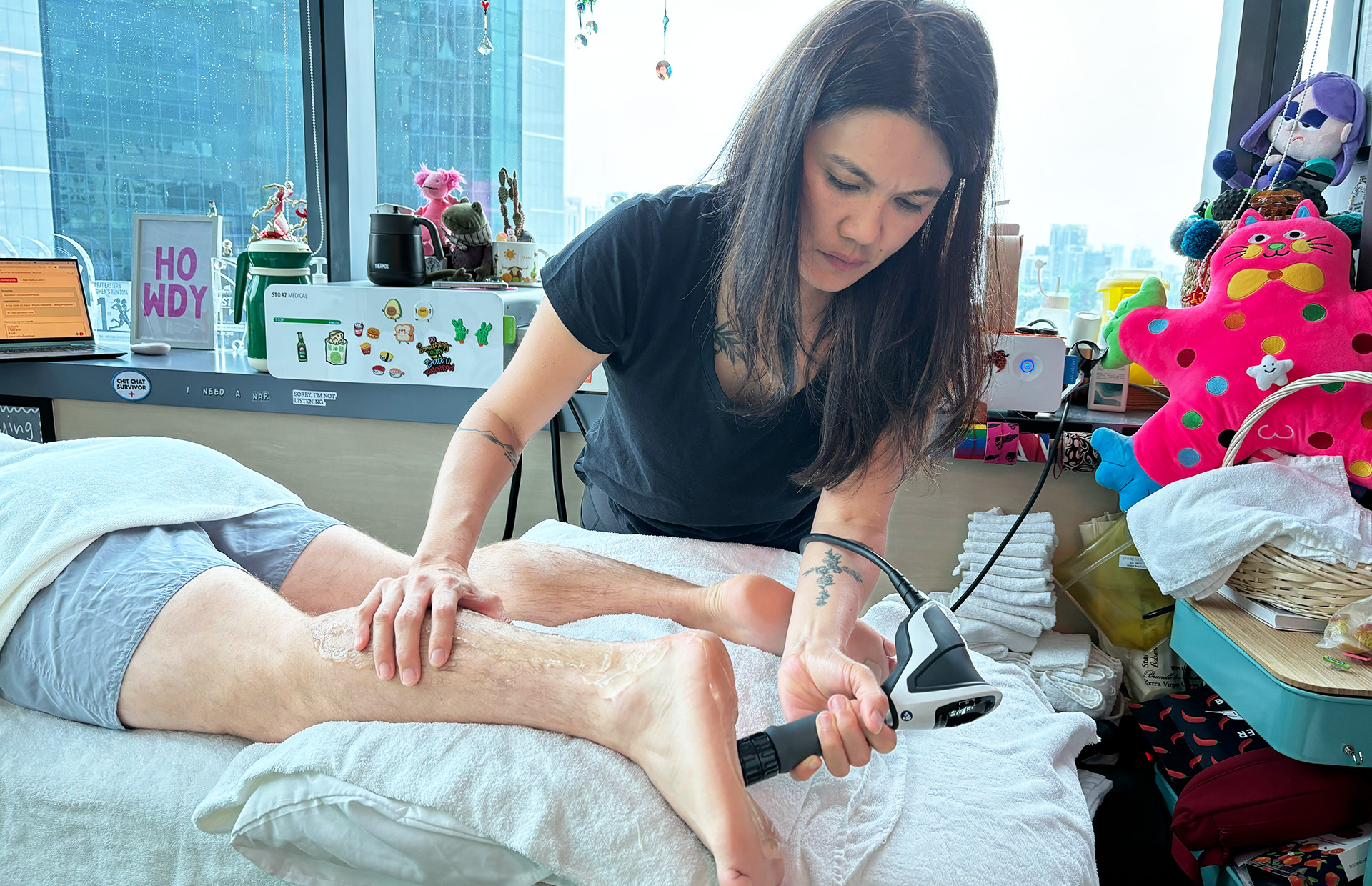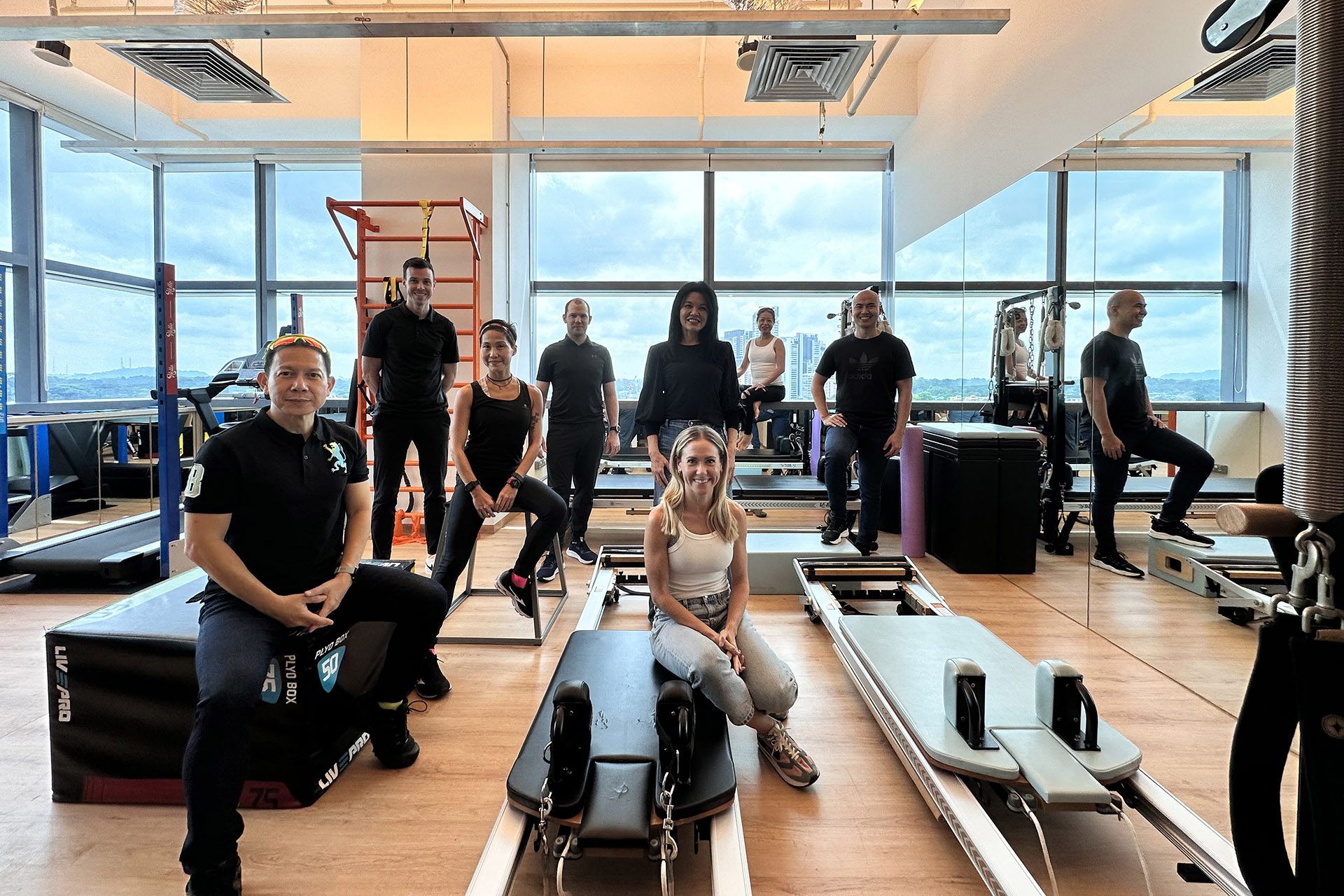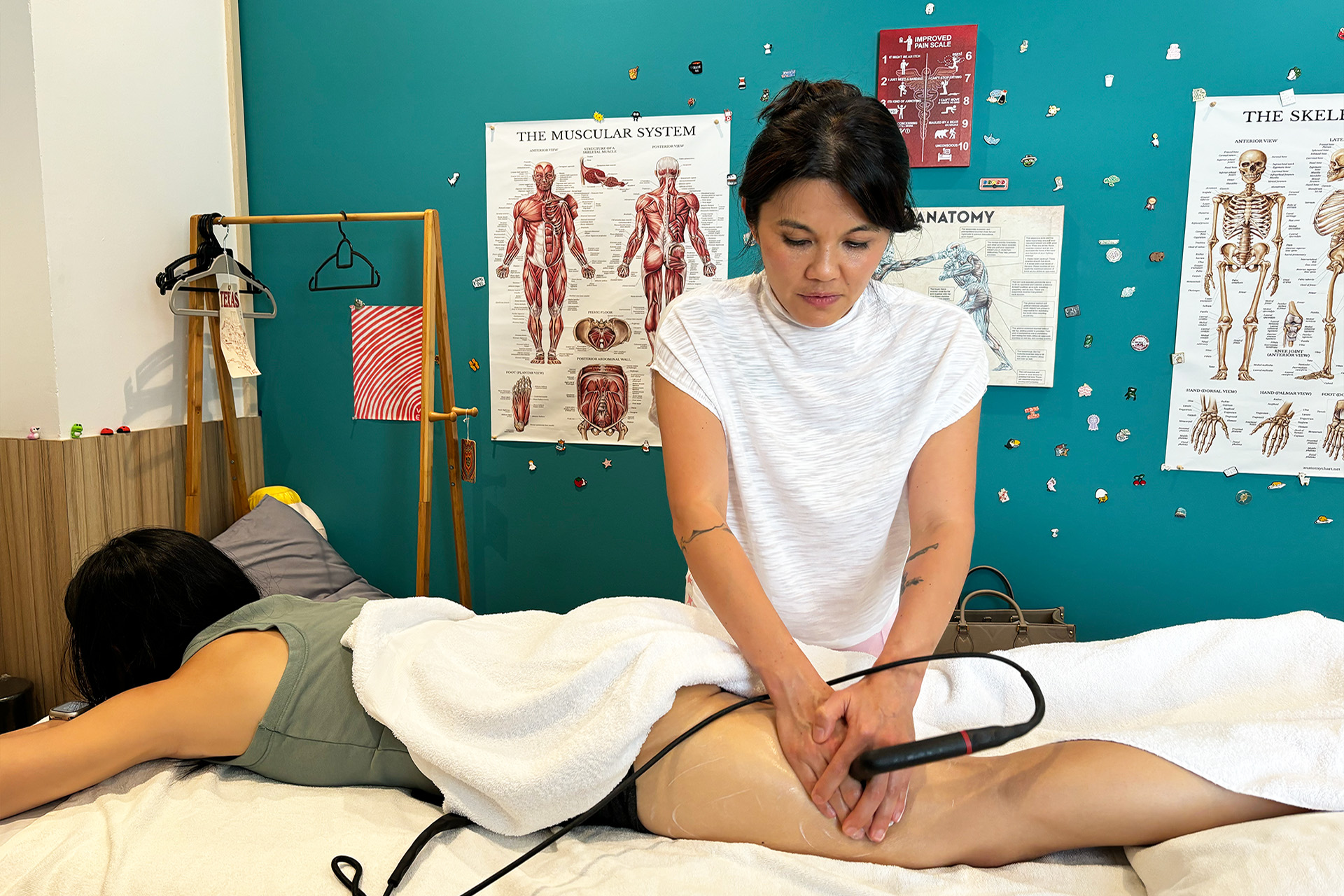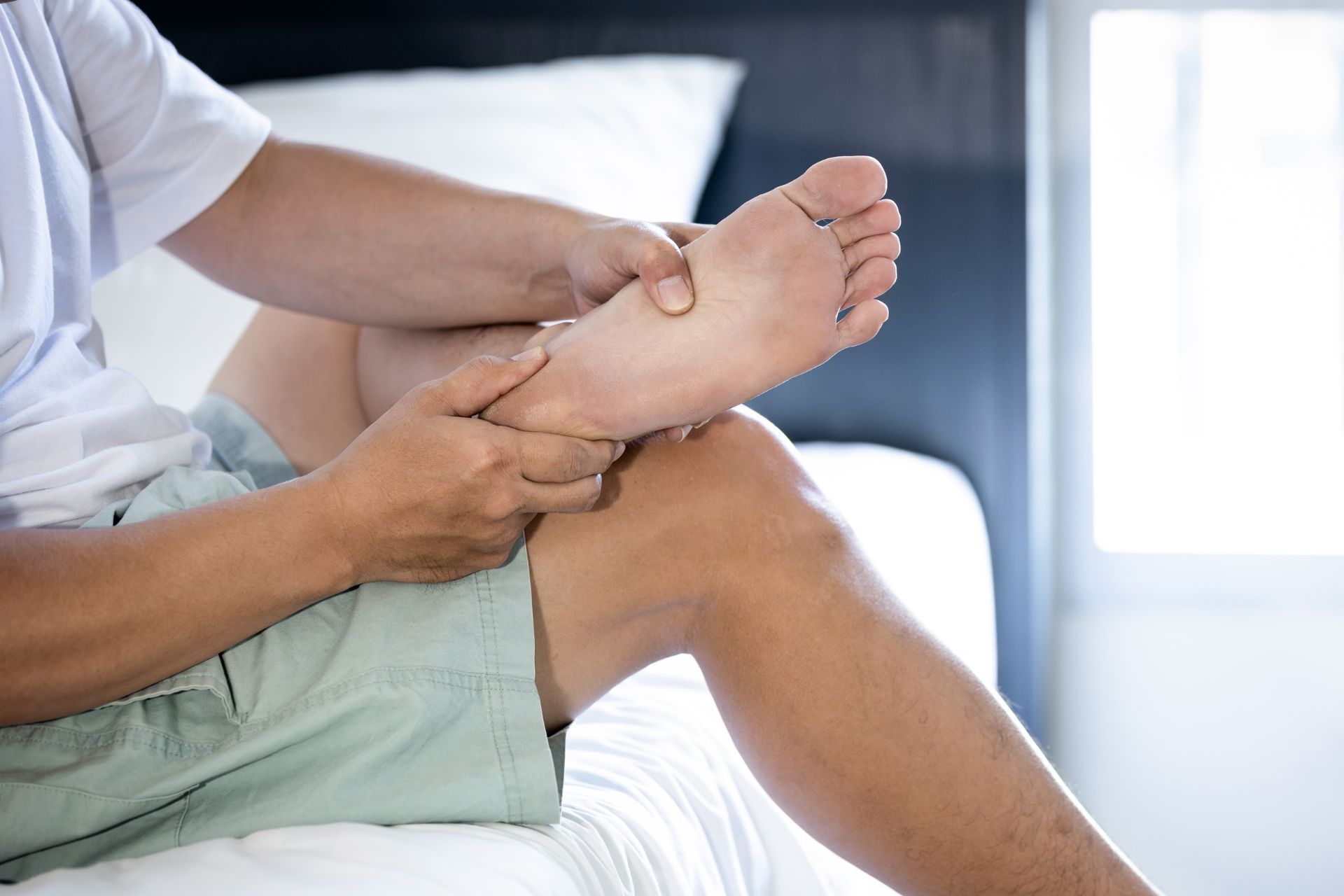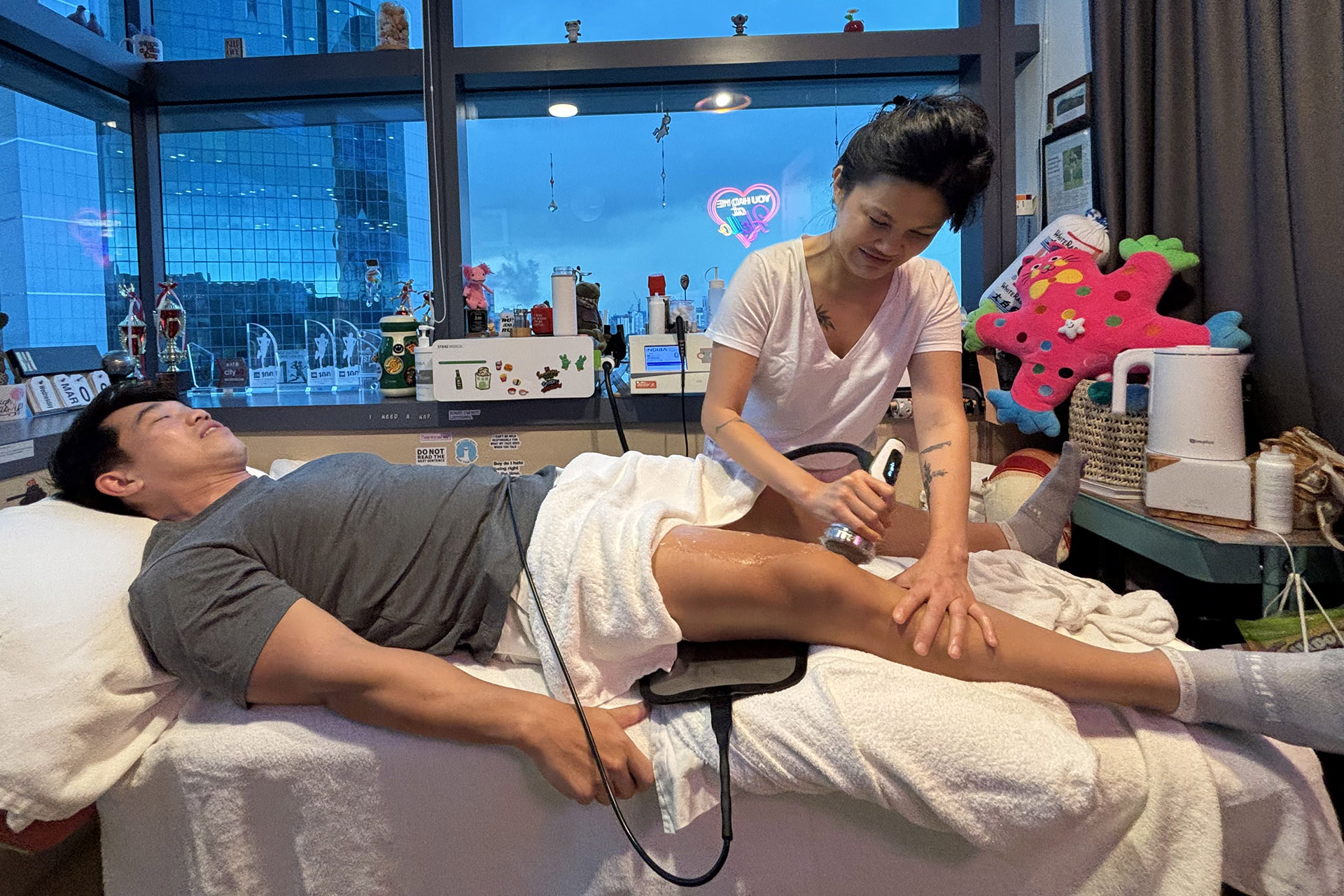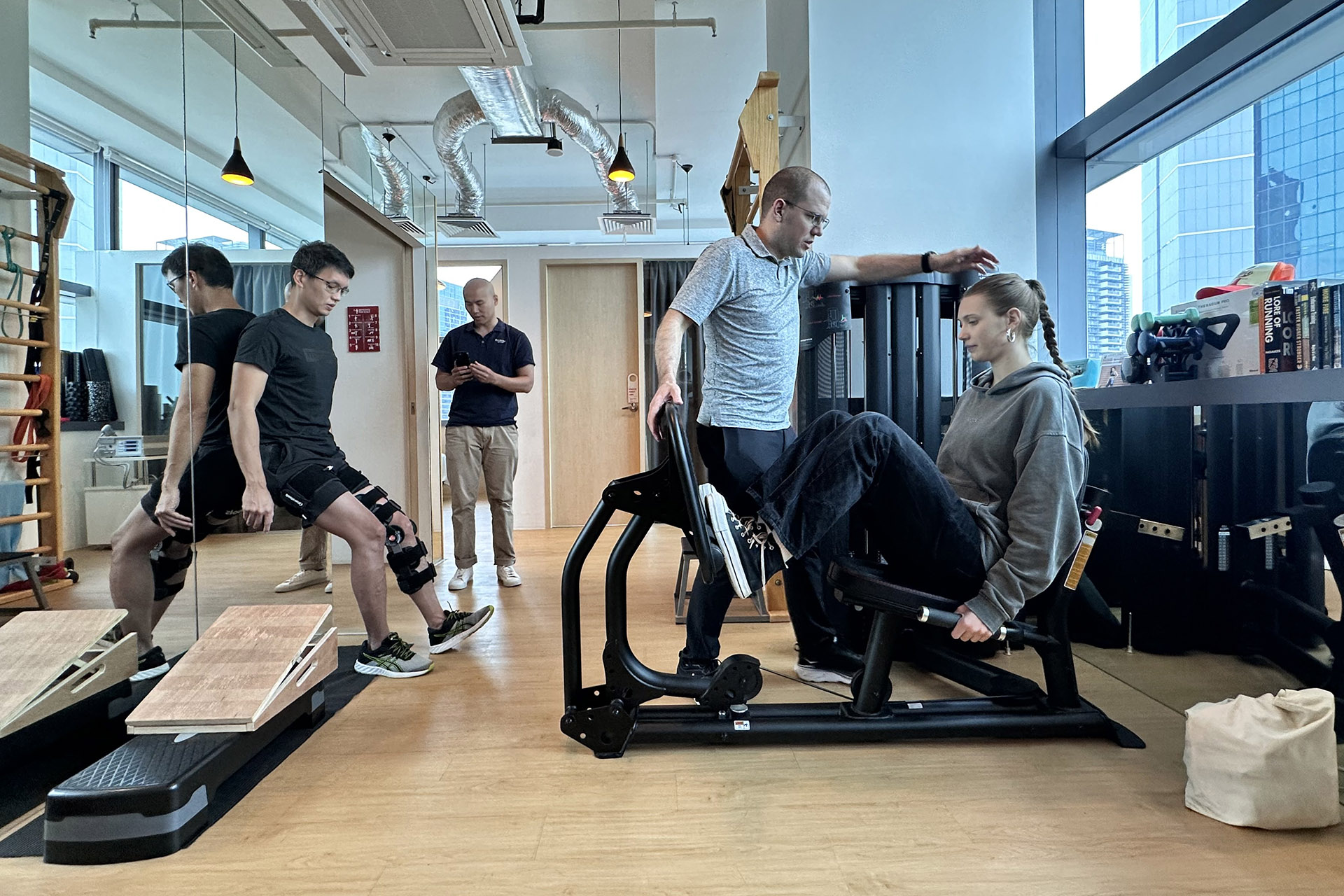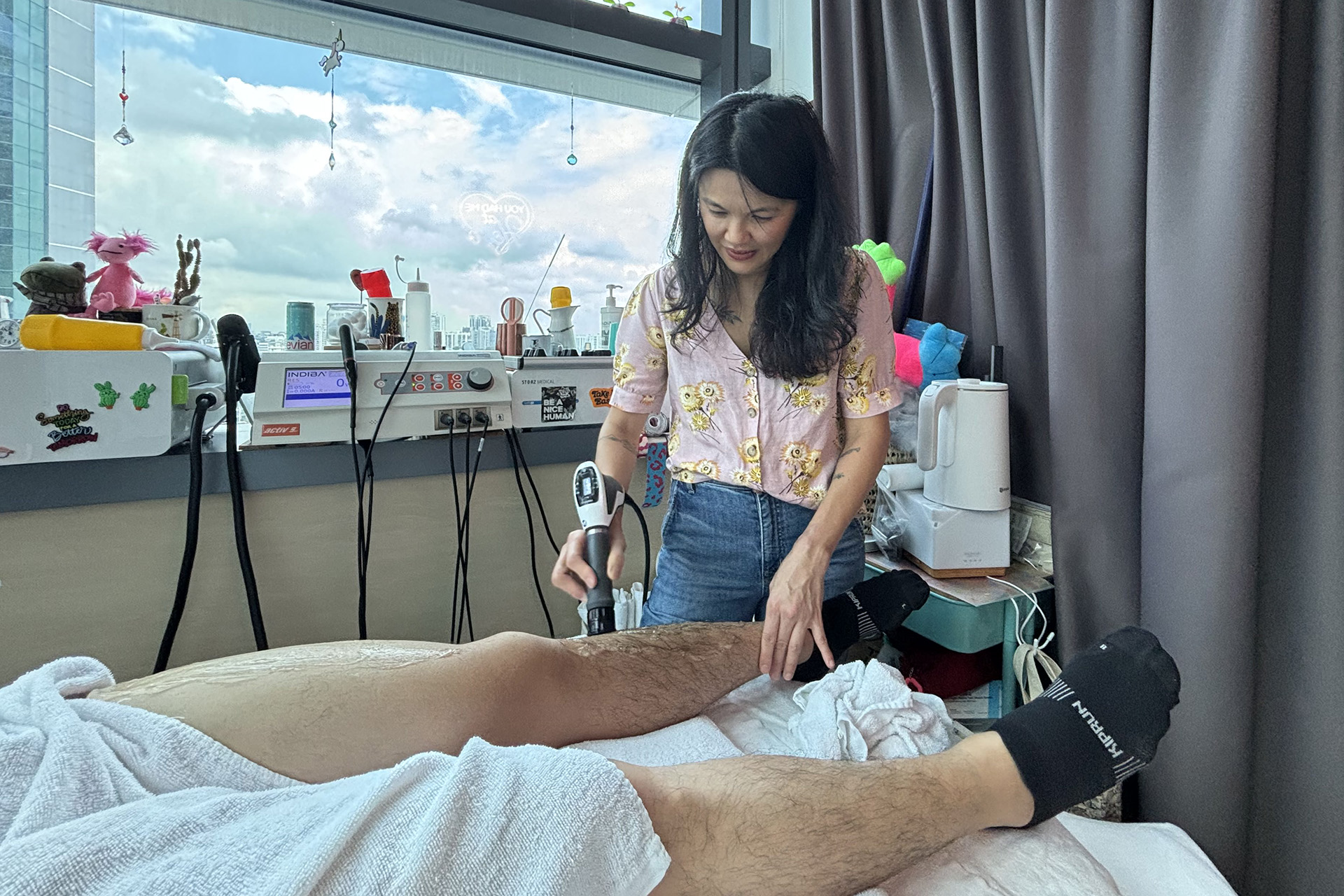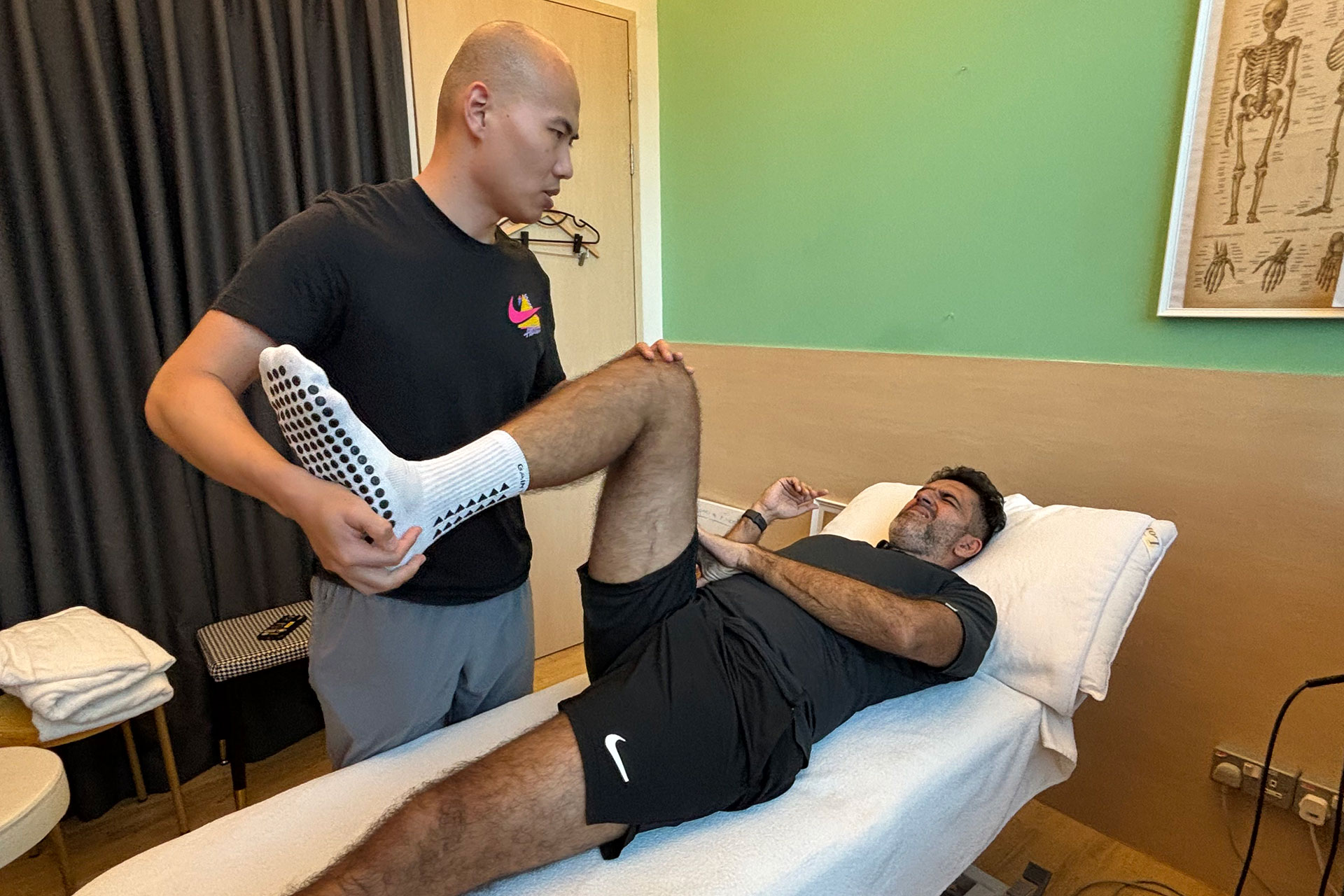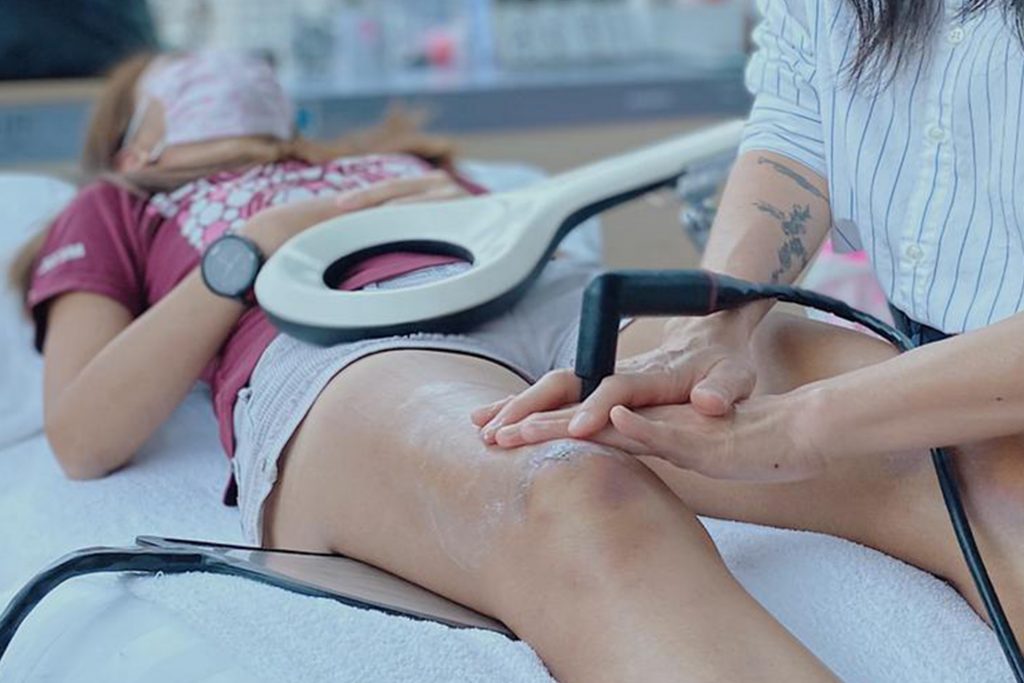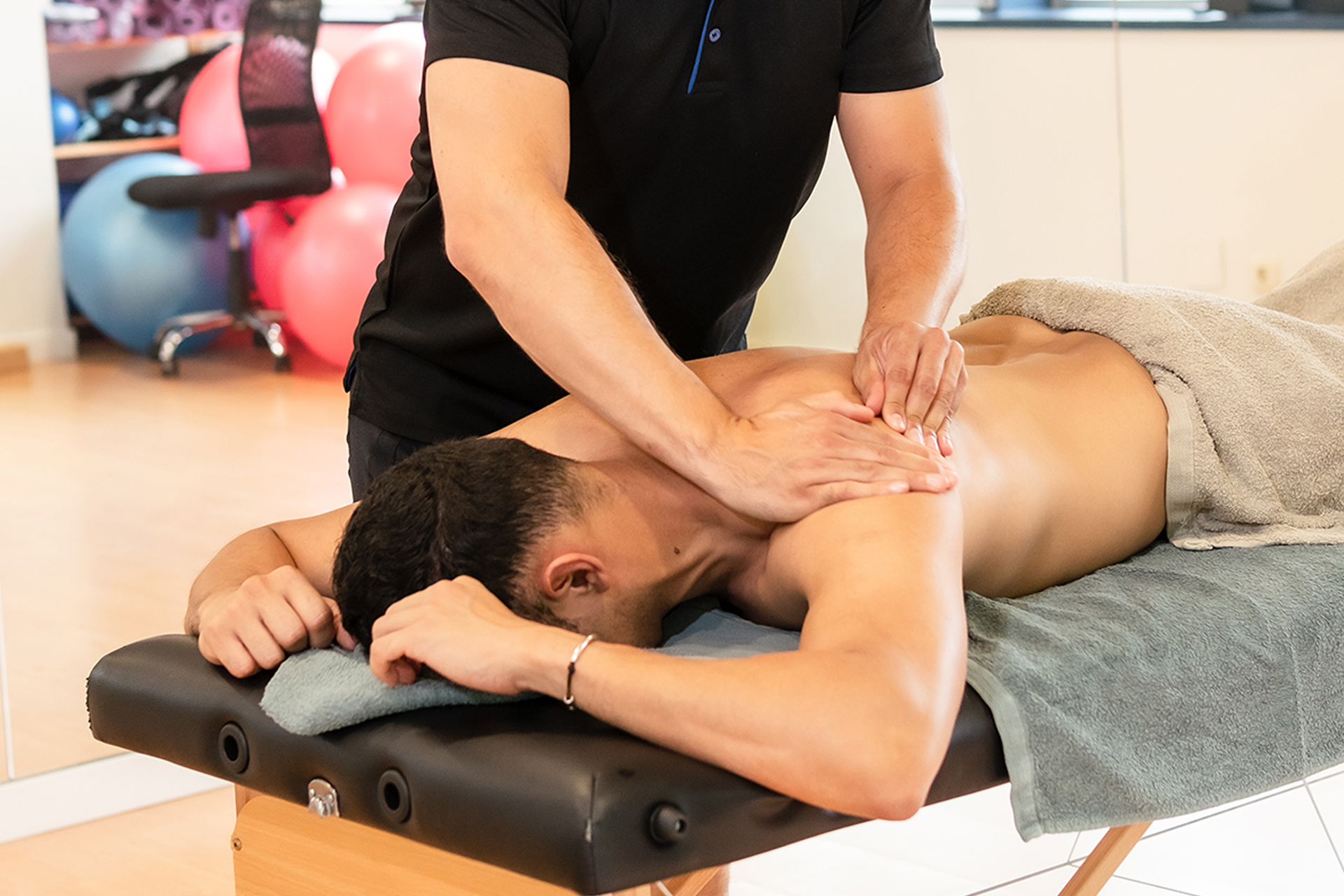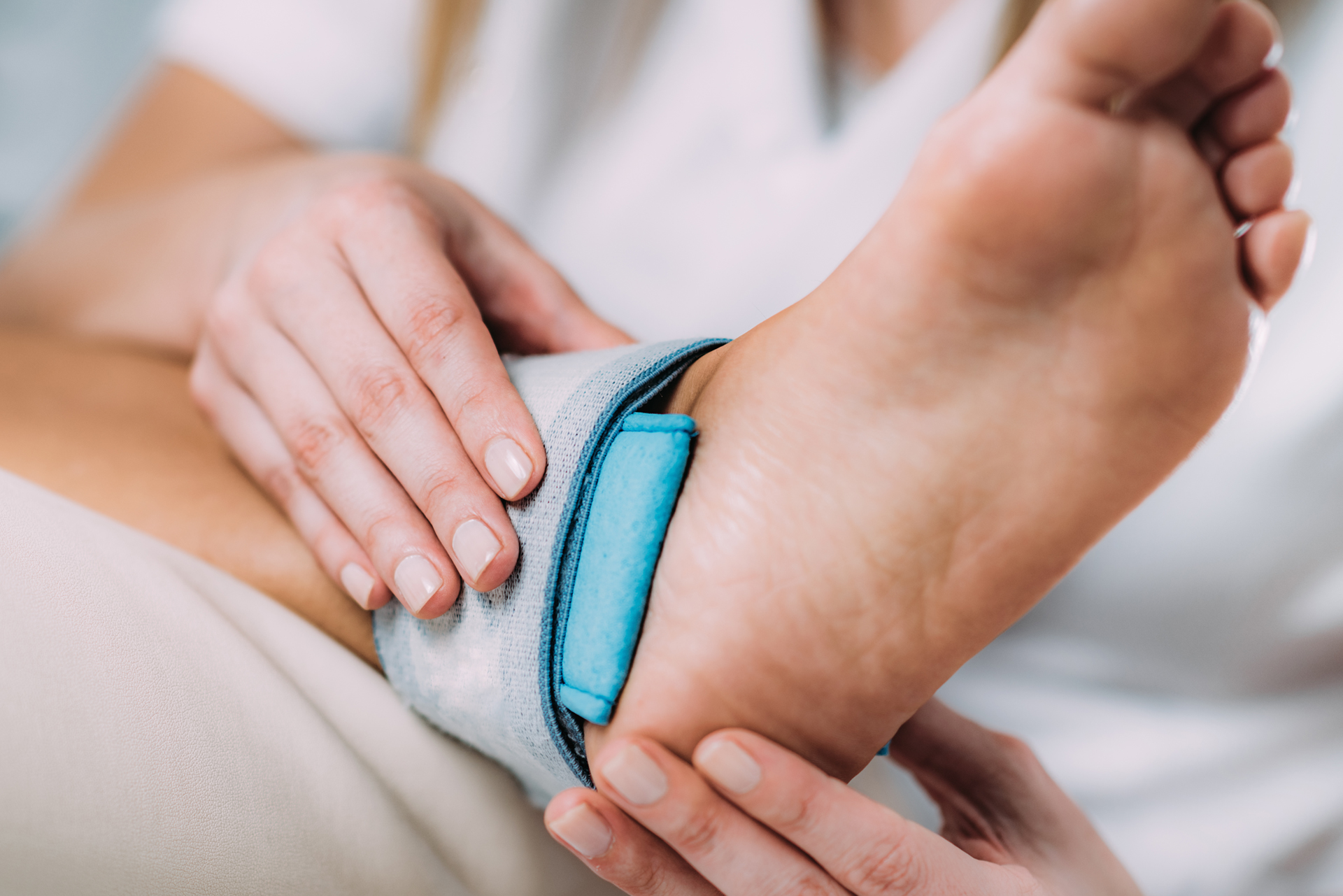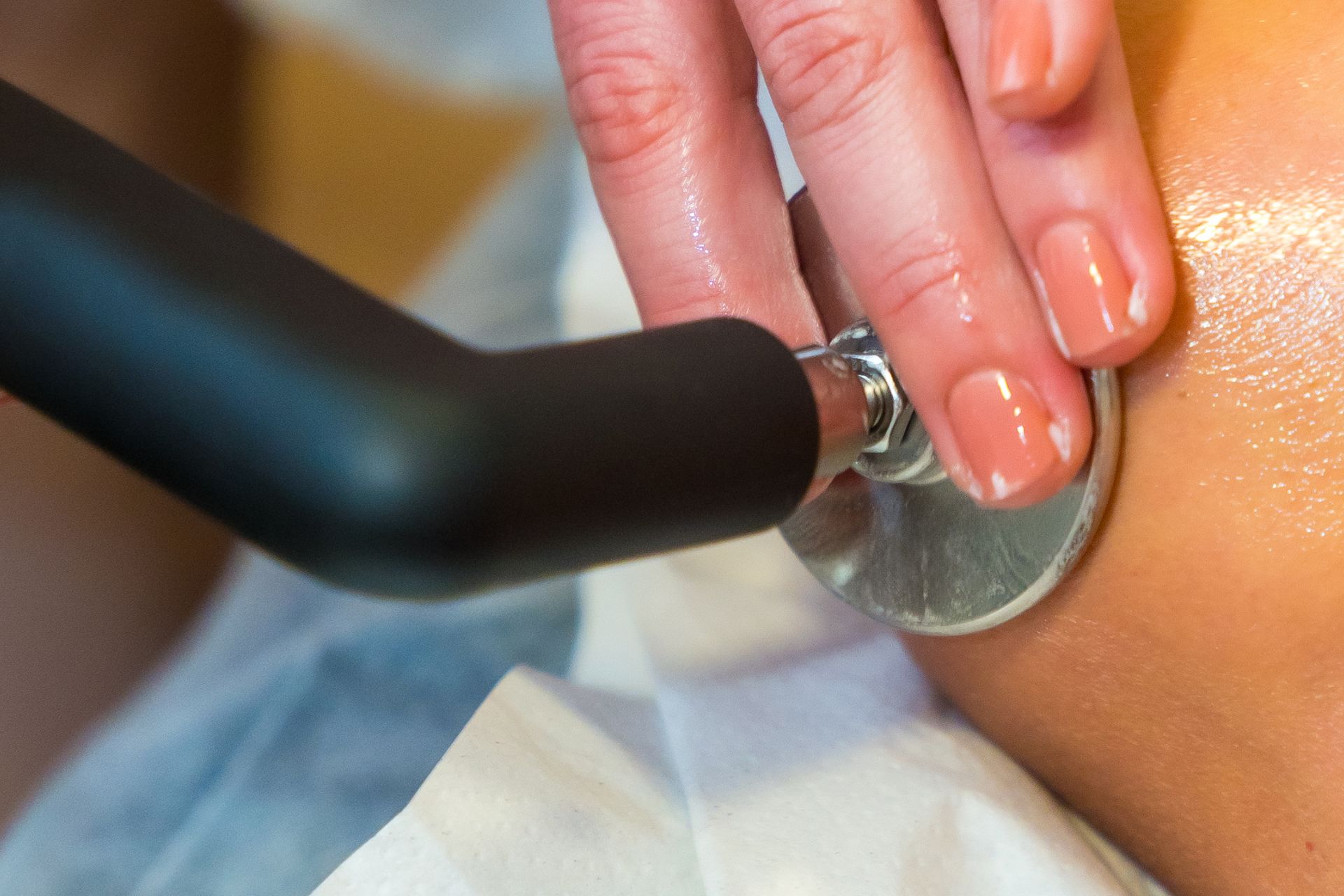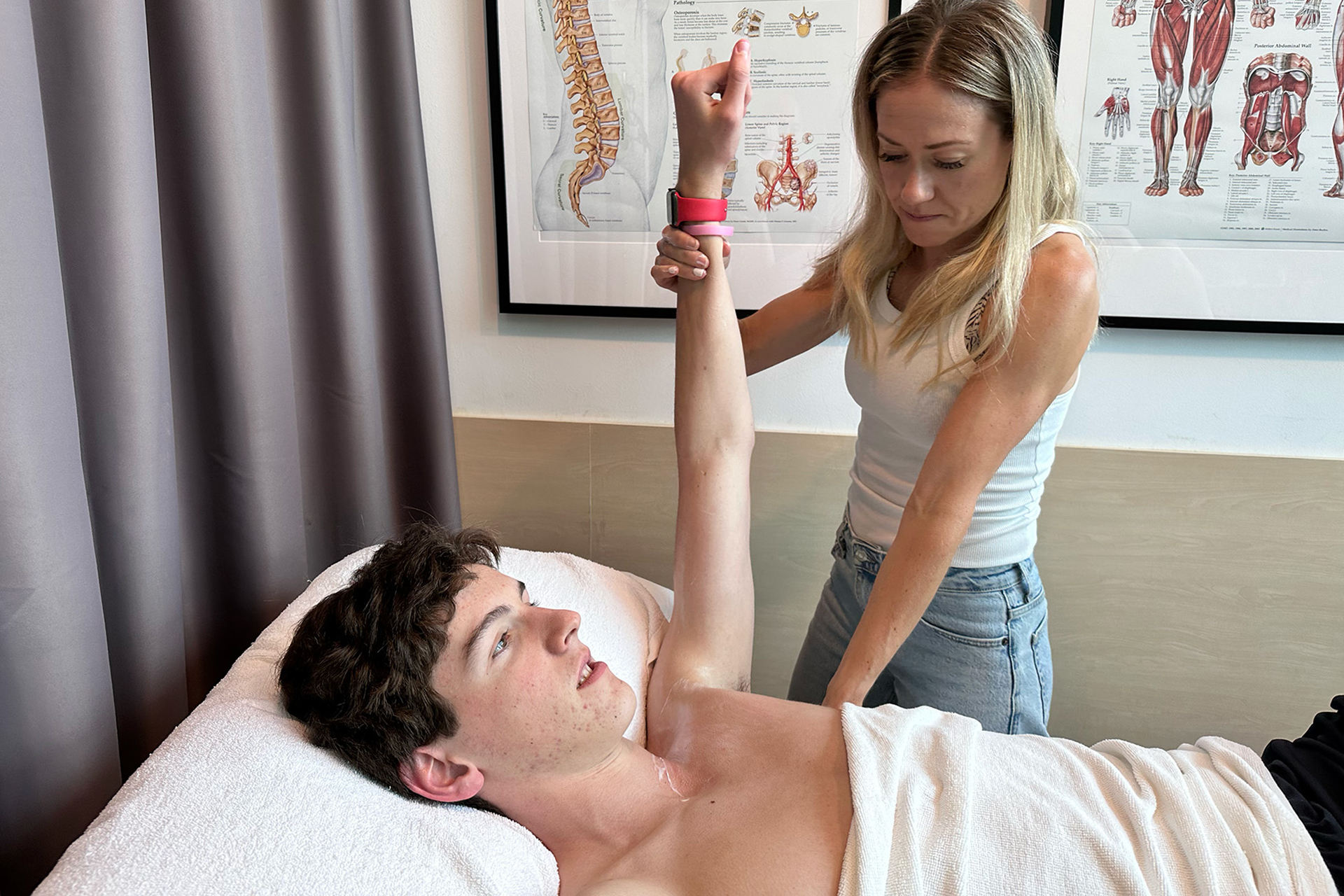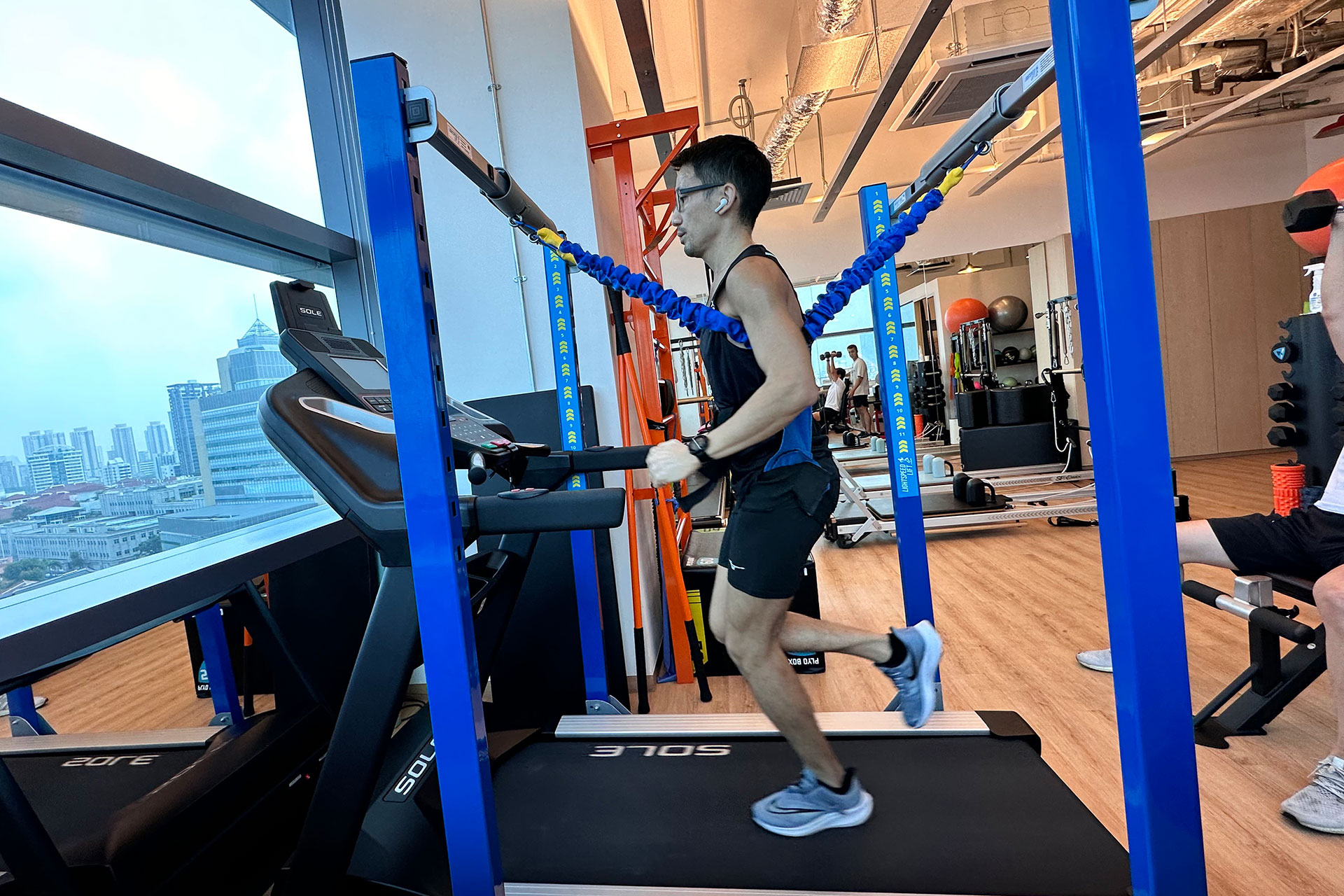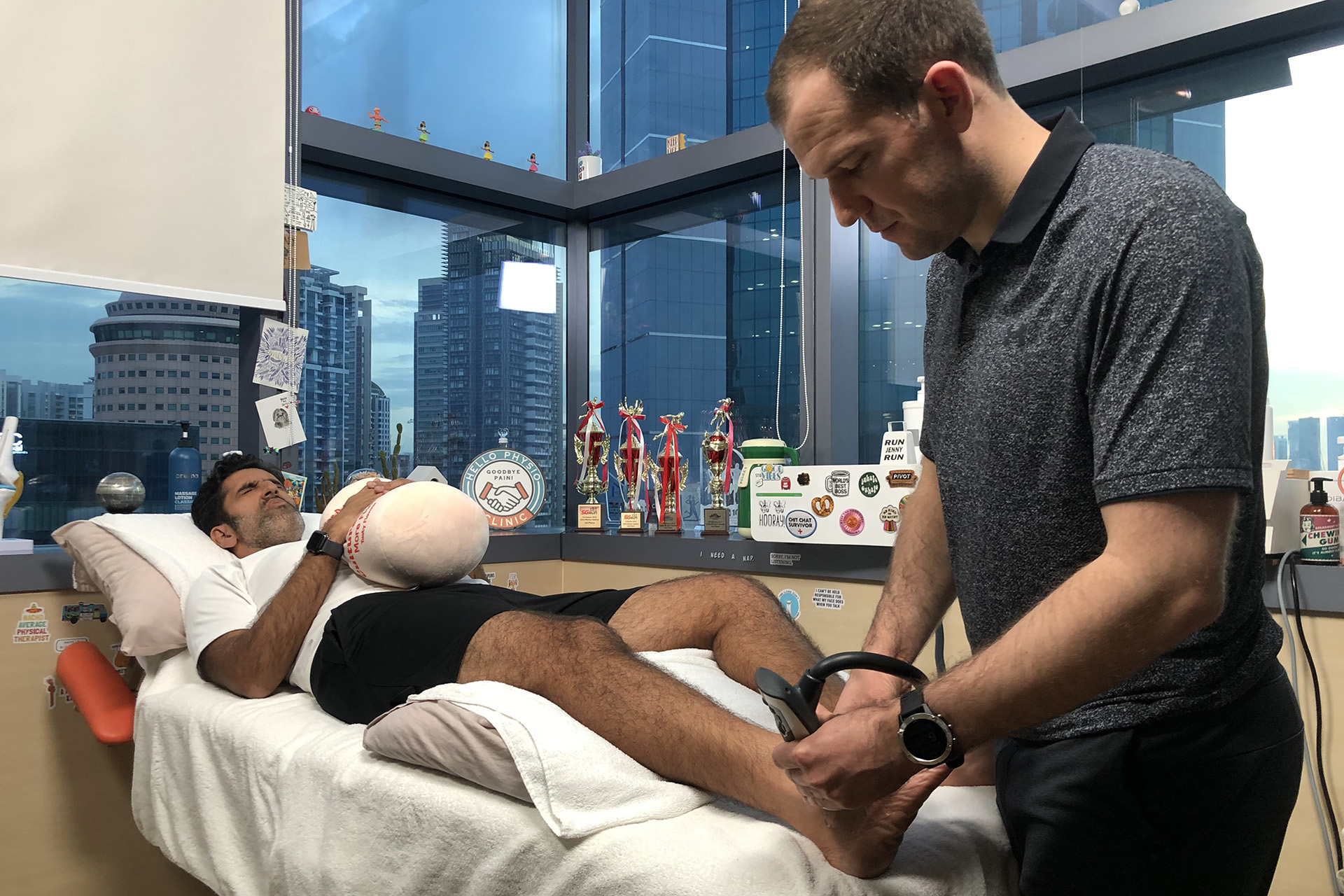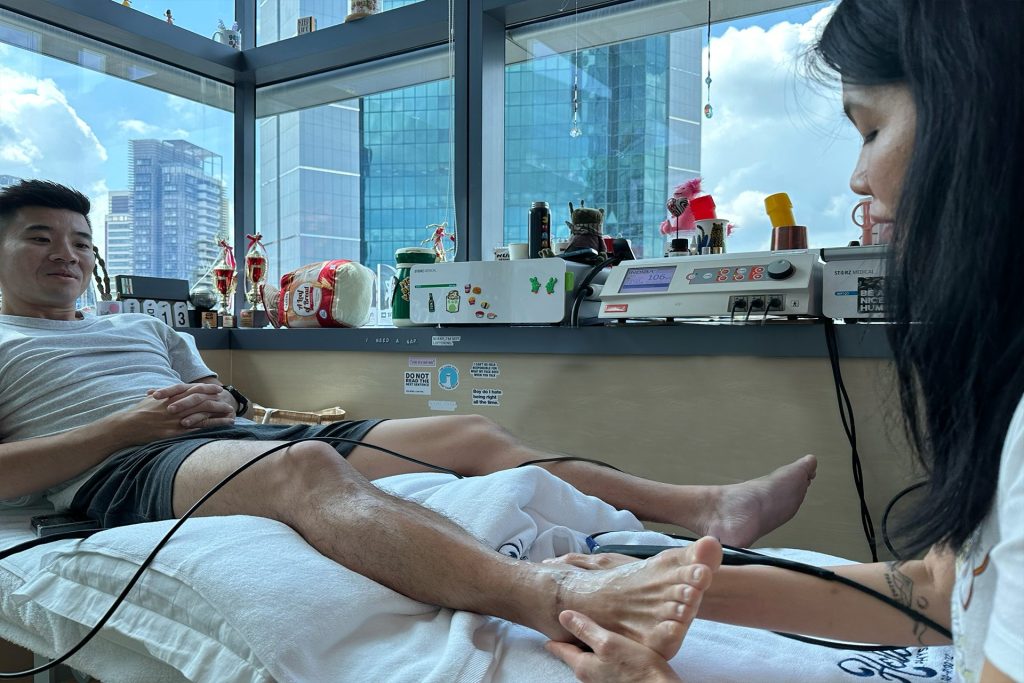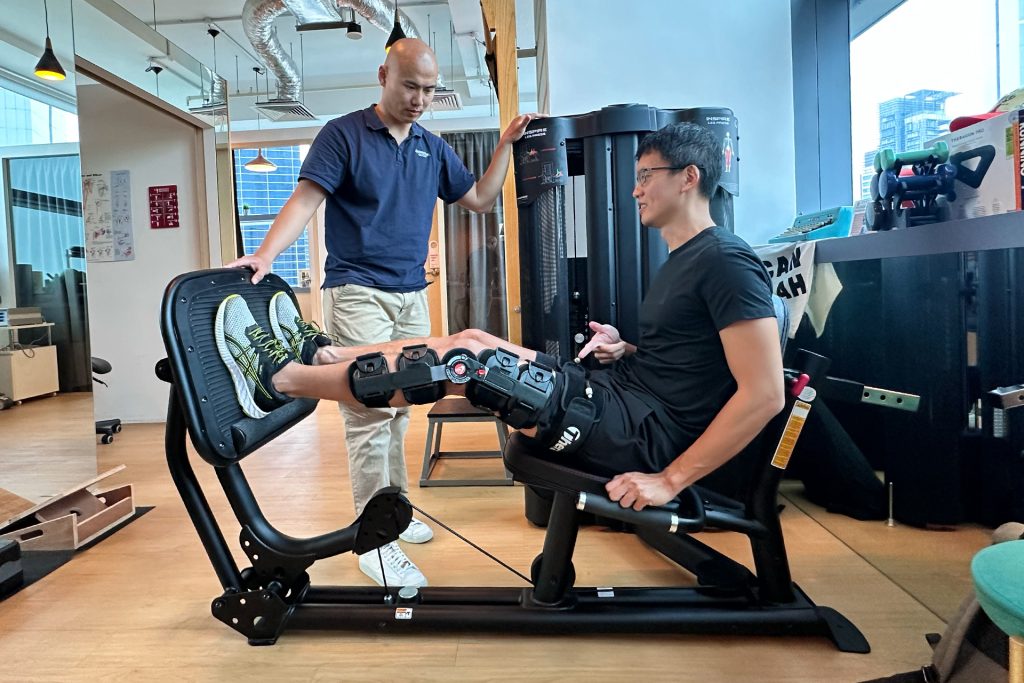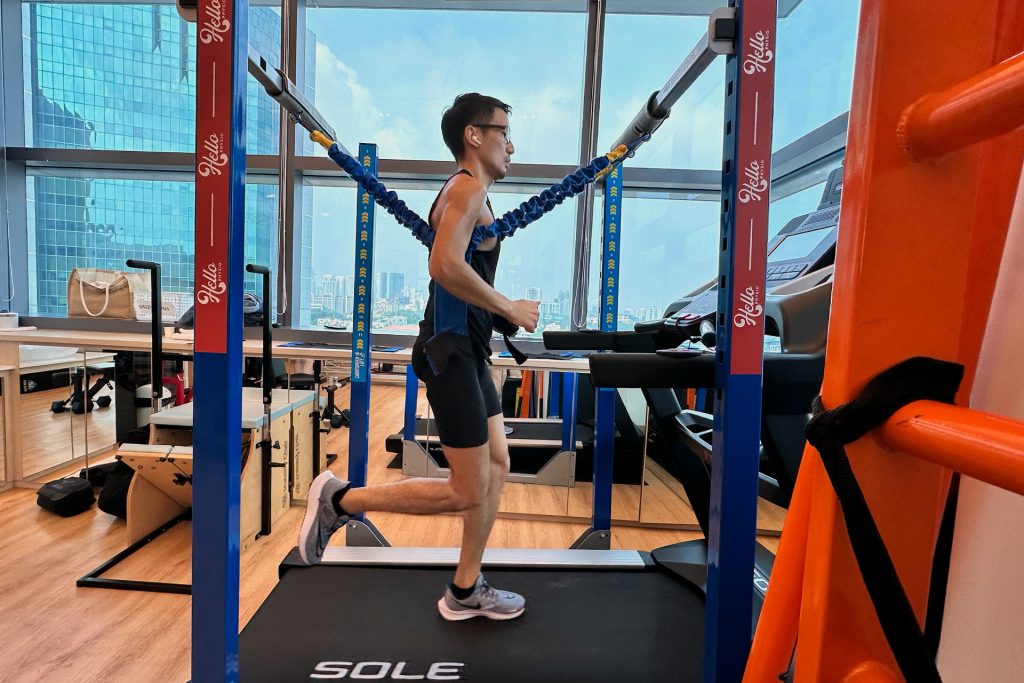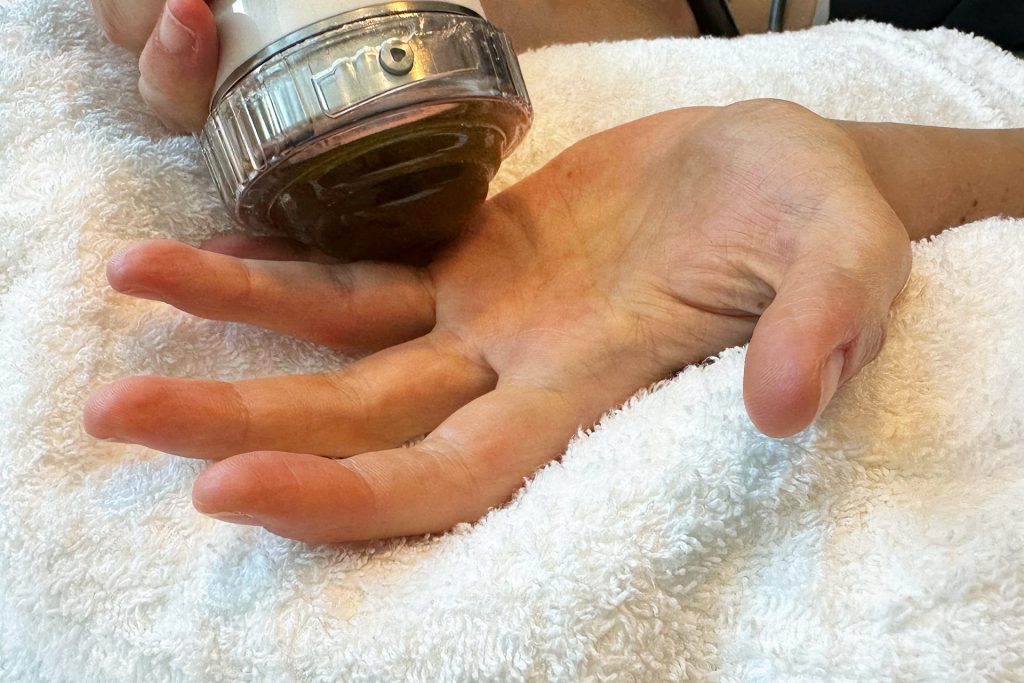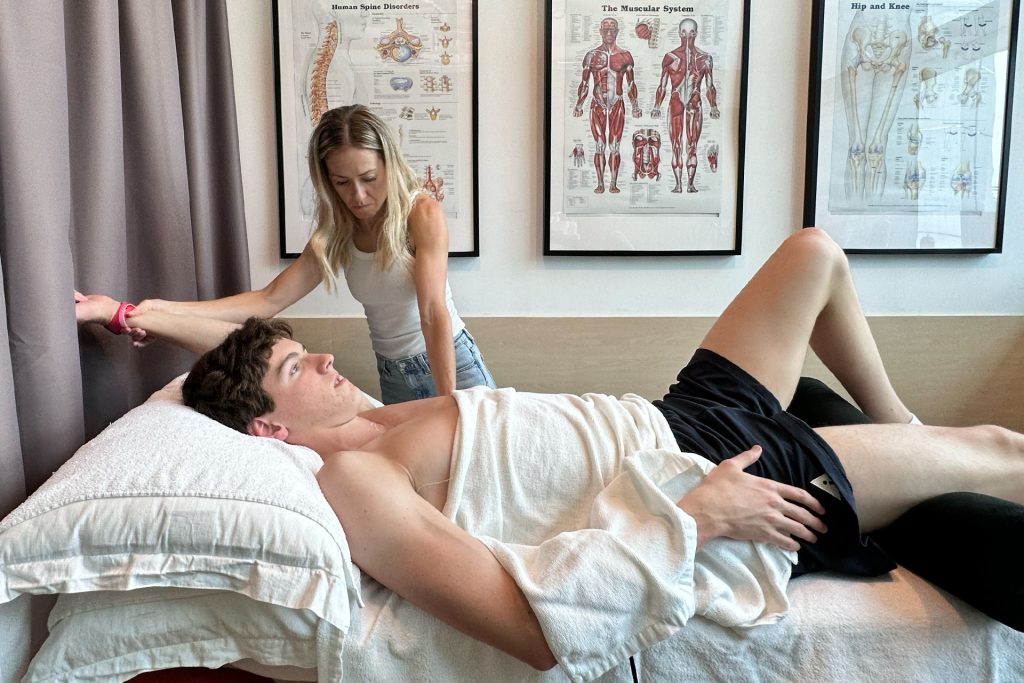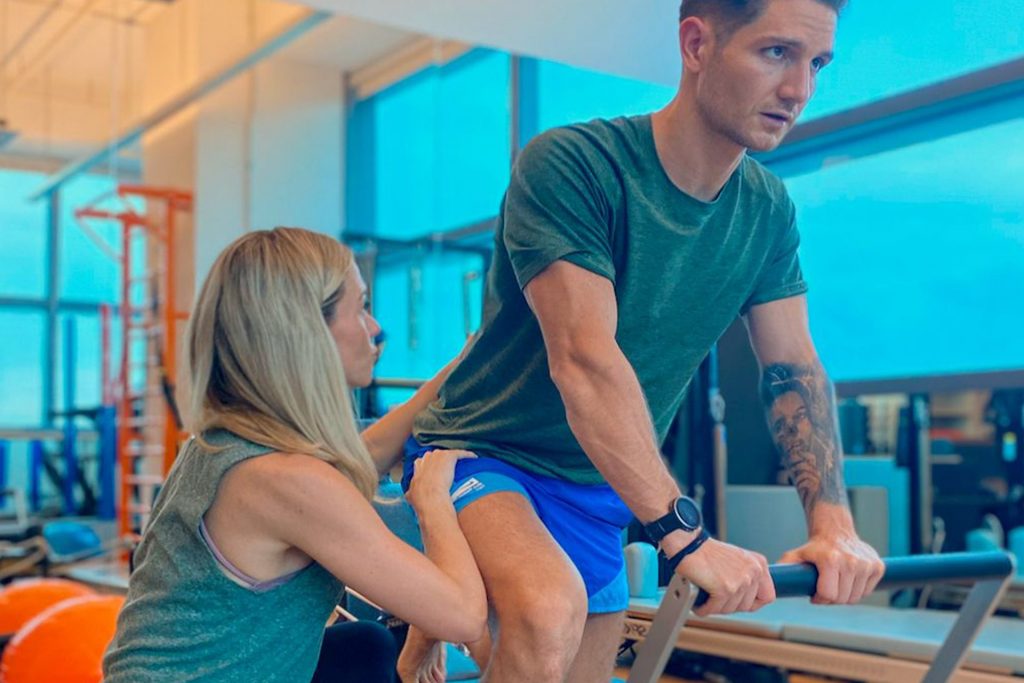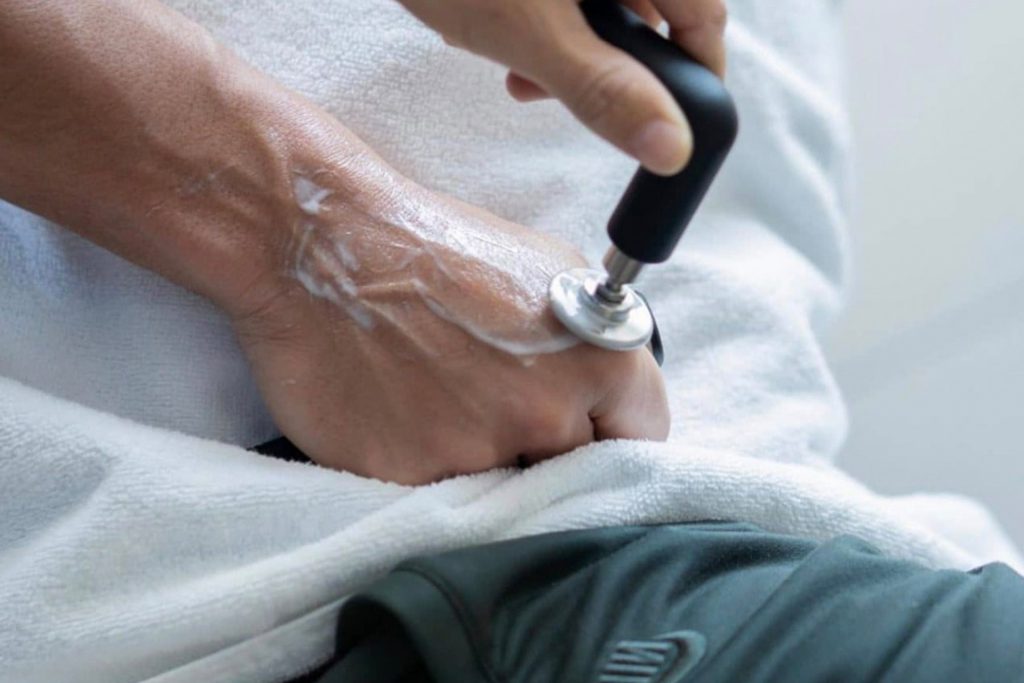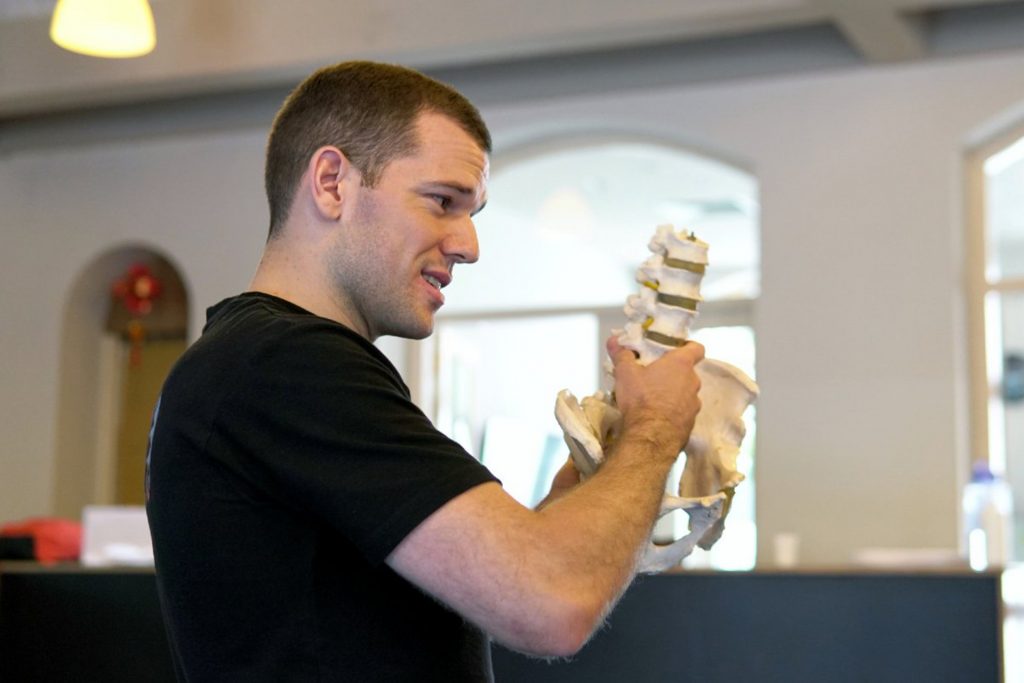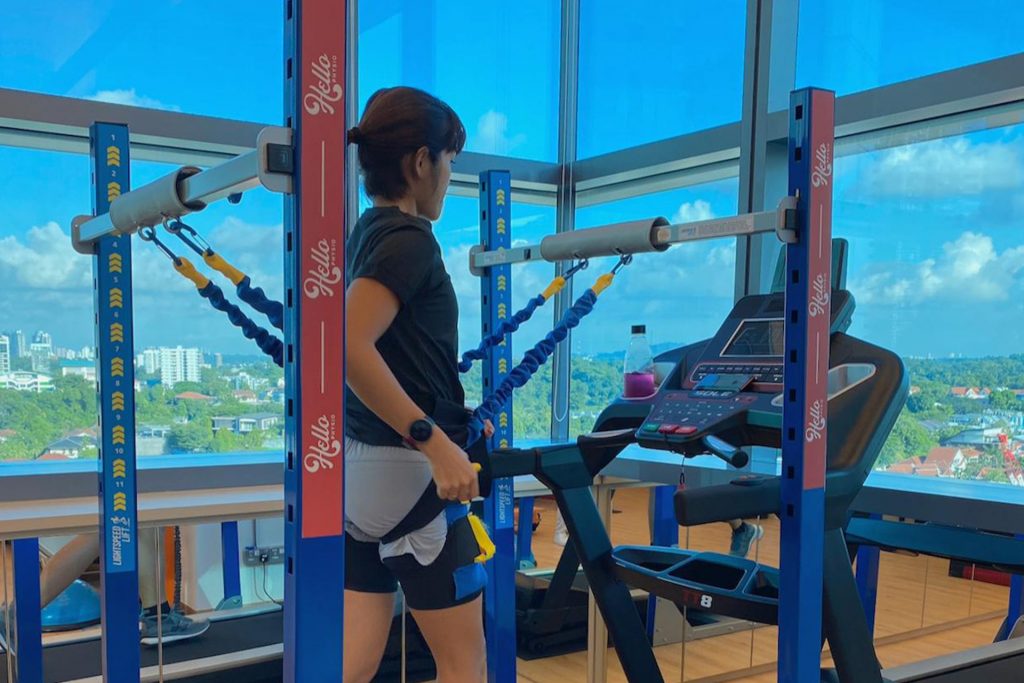|
Getting your Trinity Audio player ready...
|
A hamstring tear is one of the most common sports injuries, particularly among sprinters, football players and athletes who require explosive power and speed. The hamstring muscle group, located at the back of the thigh, is involved in activities such as walking, running and jumping. So naturally, it is more prone to injury during high-intensity exercises. These tears occur when the hamstring muscles and/or tendons overstretch or fail under load.
Some hamstring tear symptoms are minor. Others can sideline athletes for months. Poor management increases the risk of re-injury and chronic pain. Early recognition and targeted physiotherapy are crucial for regaining mobility, strength, and confidence, as athletes and active individuals may experience a prolonged hamstring tear recovery or negatively impact their long-term athletic performance.

Anatomy of the Hamstring Muscles
The hamstring muscle group, located at the back of the thigh, consists of three muscles: the biceps femoris, semitendinosus, and semimembranosus. All three hamstring muscles originate from the ischial tuberosity, a bony prominence at the base of the pelvis. Together, the hamstring muscle group extends the hip and flexes the knee, powering sprinting, jumping, and rapid changes of direction, activities critical to many athletes across different sports. Their dual role across the hip and knee makes them more prone to strain and tear, especially during eccentric loading when the muscle lengthens while contracting.
What Causes a Hamstring Tear?
Most hamstring tears are from overstretching or sudden eccentric overload, especially during sprinting or rapid acceleration. Sports such as football, basketball, rugby, and dance put athletes at high risk due to frequent pivots, lunges, and bursts of speed.
Intrinsic risk factors are a history of hamstring injuries, limited flexibility, and imbalances between the hamstrings and the quadriceps. Weak glutes or fatigue may also increase vulnerability and contribute to muscle injury. Extrinsic risk factors are inadequate warm-ups, training in cold weather, or pushing training loads too quickly without progressive conditioning.
Hamstring tear symptoms usually appear suddenly. Many describe a sharp or stabbing pain in the back of the thigh, sometimes accompanied by an audible “pop”. This pain can radiate down the leg or the whole leg. Swelling, bruising and tenderness can appear within hours. Loss of strength and restricted mobility often follow, making it difficult to walk, run or bend the knee.
In more severe cases, complete hamstring tear symptoms may include severe pain, the inability to bear weight, and a visible deformity in the muscle. Differentiating mild strains from a hamstring tendon tear is crucial, as treatment and recovery timelines vary significantly.
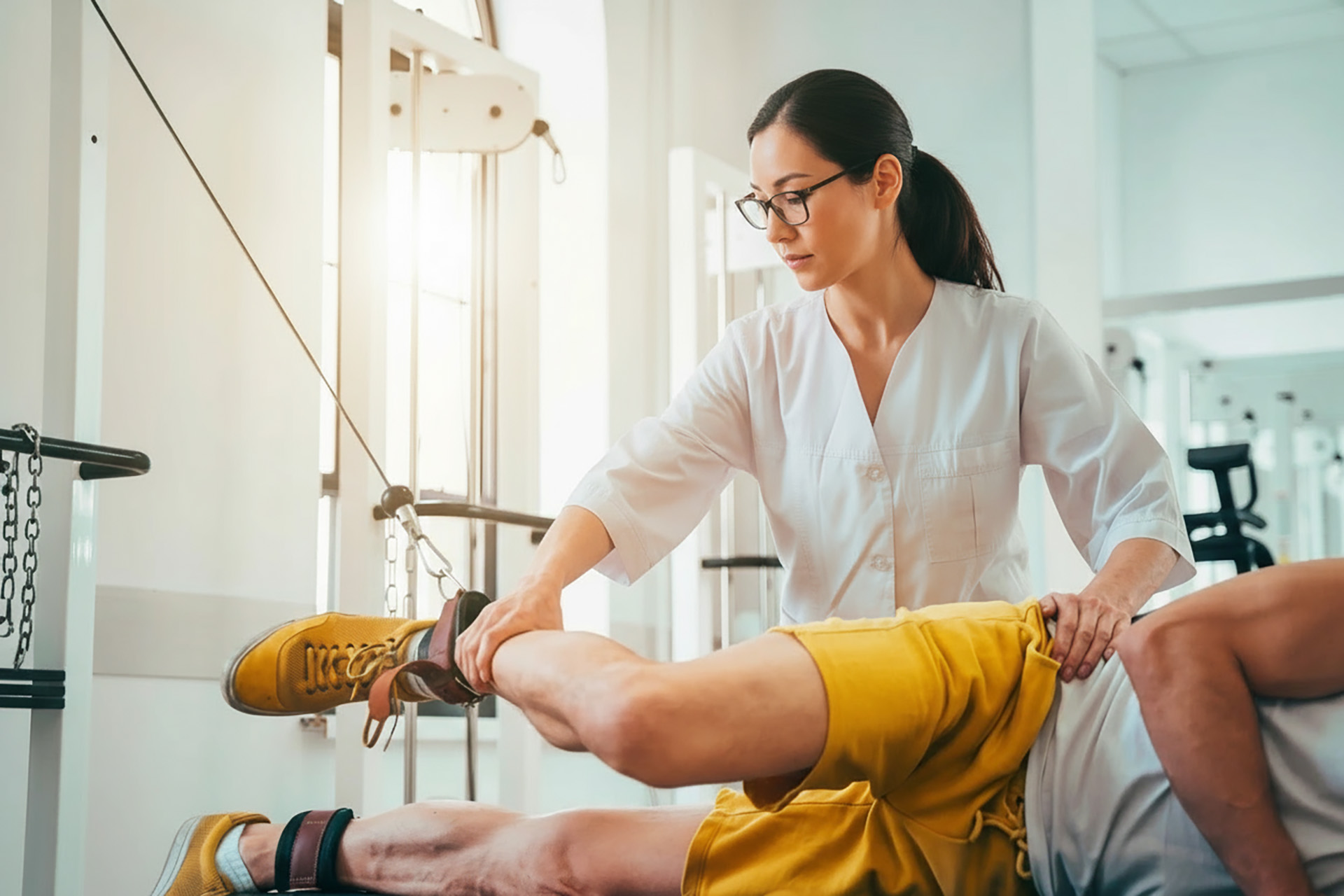
Classification and Grading of Hamstring Tears
Hamstring tears are graded based on severity, which also affects recovery times:
- Grade 1 hamstring tear: Mild strain with microscopic fibre damage, little strength loss and short recovery time.
- Grade 2 hamstring tear: Partial tear causing significant pain, swelling and impaired mobility. Recovery is longer and requires structured rehabilitation.
- Grade 3 hamstring tear: Complete tear or tendon avulsion with severe pain and inability to bear weight. Surgery is often required.
Imaging, particularly MRIs, plays a crucial role in determining the severity of the hamstring tear and informs the treatment decisions.
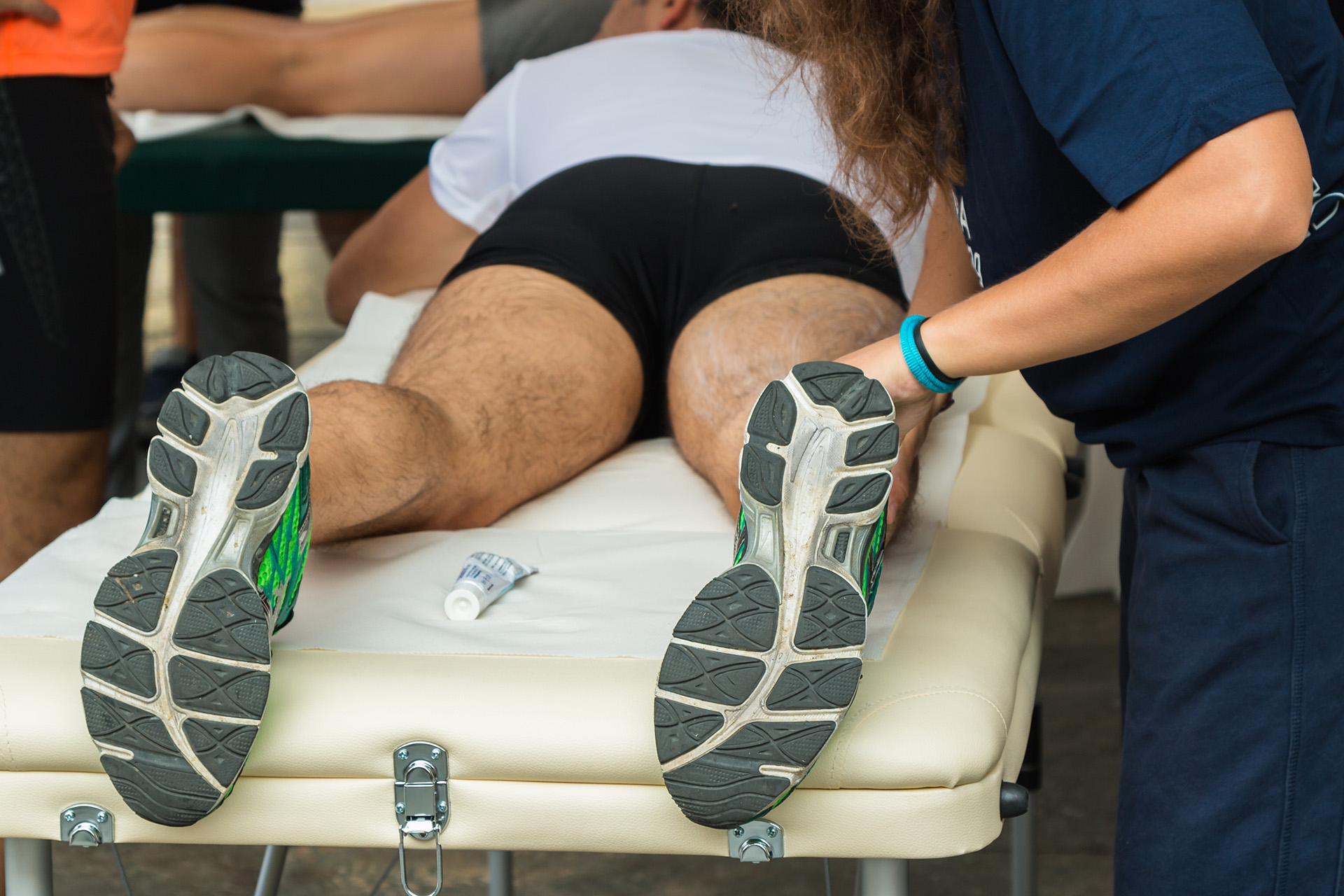
How to Diagnose a Hamstring Tear
The diagnosis of a hamstring tear begins with a clinical examination. Specialists assess tenderness, bruising and range of movement, often using resistance tests to gauge your muscle strength.
For an accurate diagnosis, imaging is essential. Ultrasounds provide real-time views of muscle fibres, while MRIs are the gold standard for assessing the extent of damage and distinguishing between partial and complete tears. Accurate diagnosis is key as it guides rehabilitation and can shorten hamstring tear recovery time.

Conservative Treatment for Hamstring Tears
Most hamstring tears, especially mild and moderate cases, respond well to conservative treatment and do not require invasive surgery.
Early care often follows the RICE principles: rest, ice, compression and elevation. From there, physical therapy for hamstring tears becomes the cornerstone of recovery. Programs that target strength, flexibility, and neuromuscular control are essential, with exercises tailored progressively, starting with gentle activation and progressing to eccentric strengthening, which has been proven to reduce reinjury rates.
Adjunct modalities can also accelerate healing. Shockwave Therapy stimulates tissue regeneration and breaks down scar tissue, while INDIBA® enhances cellular circulation to speed repair. Electromagnetic Transduction Therapy (EMTT) can further reduce inflammation and encourage tissue regeneration. These therapies, combined with manual physiotherapy, optimise recovery and reduce fibrosis.
Bracing or taping may provide additional support during activity, especially in the early stages of recovery.
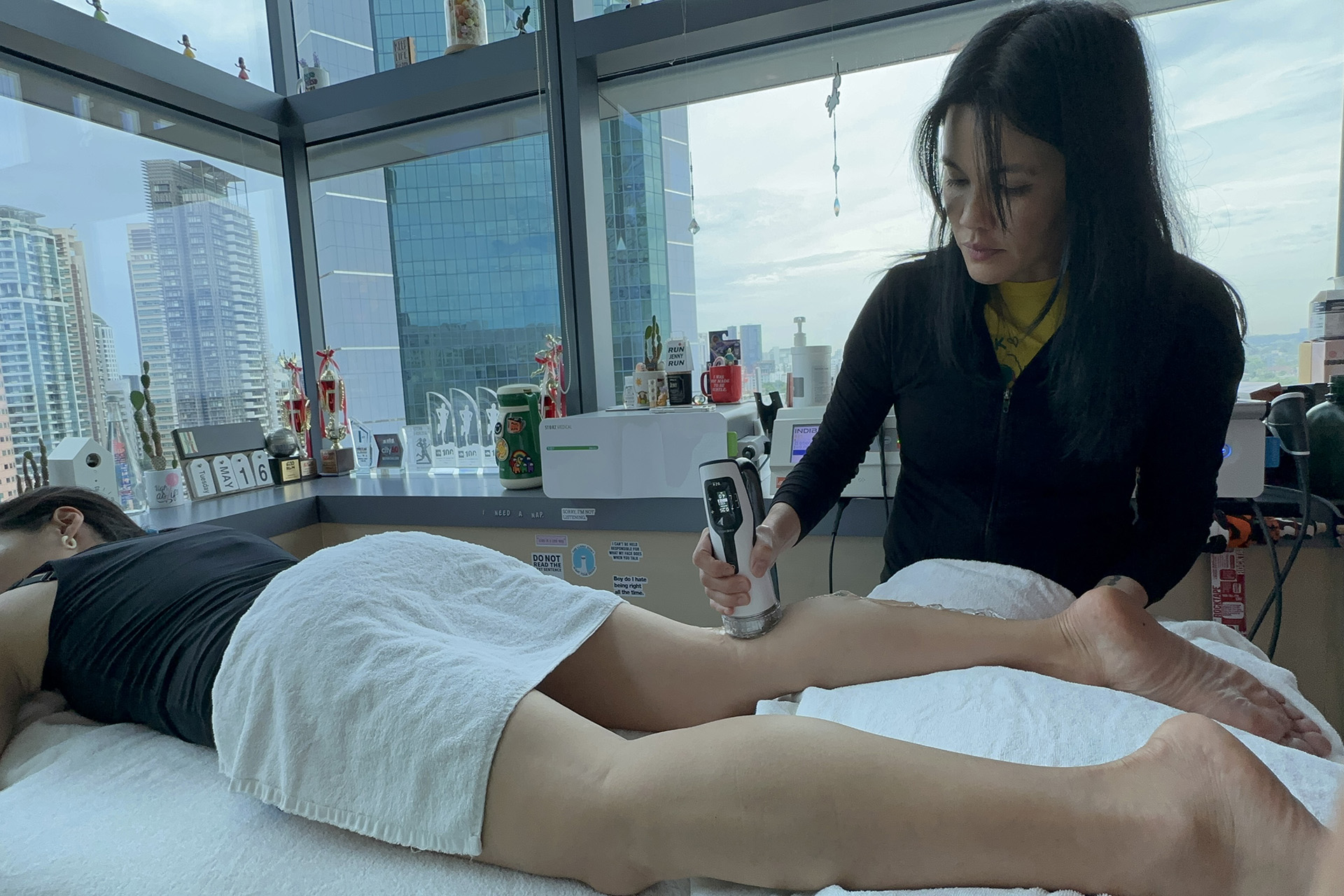
Surgical Treatment for Severe Hamstring Tears
Surgery is necessary when conservative treatments fail, or in severe cases such as complete ruptures or avulsion fractures. A hamstring tendon tear that pulls away from the bone often requires surgical reattachment. Techniques involve sutures or anchors to restore tendon alignment and strength.
Post-surgical rehabilitation is critical. Without structured physiotherapy, patients risk prolonged weakness, stiffness or incomplete recovery affecting their athletic performance for years. A program tailored by physiotherapists is key to restoring muscle length, function and sport-specific capabilities.
Hamstring Tear Recovery Time
Hamstring tear recovery time varies depending on the grade, age and the patient’s compliance with rehabilitation.
- Grade 1 hamstring tear: Recovery in 2-3 weeks with proper rehab
- Grade 2 hamstring tear: 4-8 weeks of structured physiotherapy
- Grade 3 hamstring tear: Recovery 3-6 months and often requires surgery
Adjunct modalities like INDIBA and Shockwave Therapy can shorten downtime by enhancing tissue repair. Systems such as LightSpeed Lift, which utilise antigravity support, enable athletes to progressively load their hamstrings during running, keeping the body moving without overstressing healing tissue. These advances not only reduce recovery time but also support confidence in returning to active life and sport.
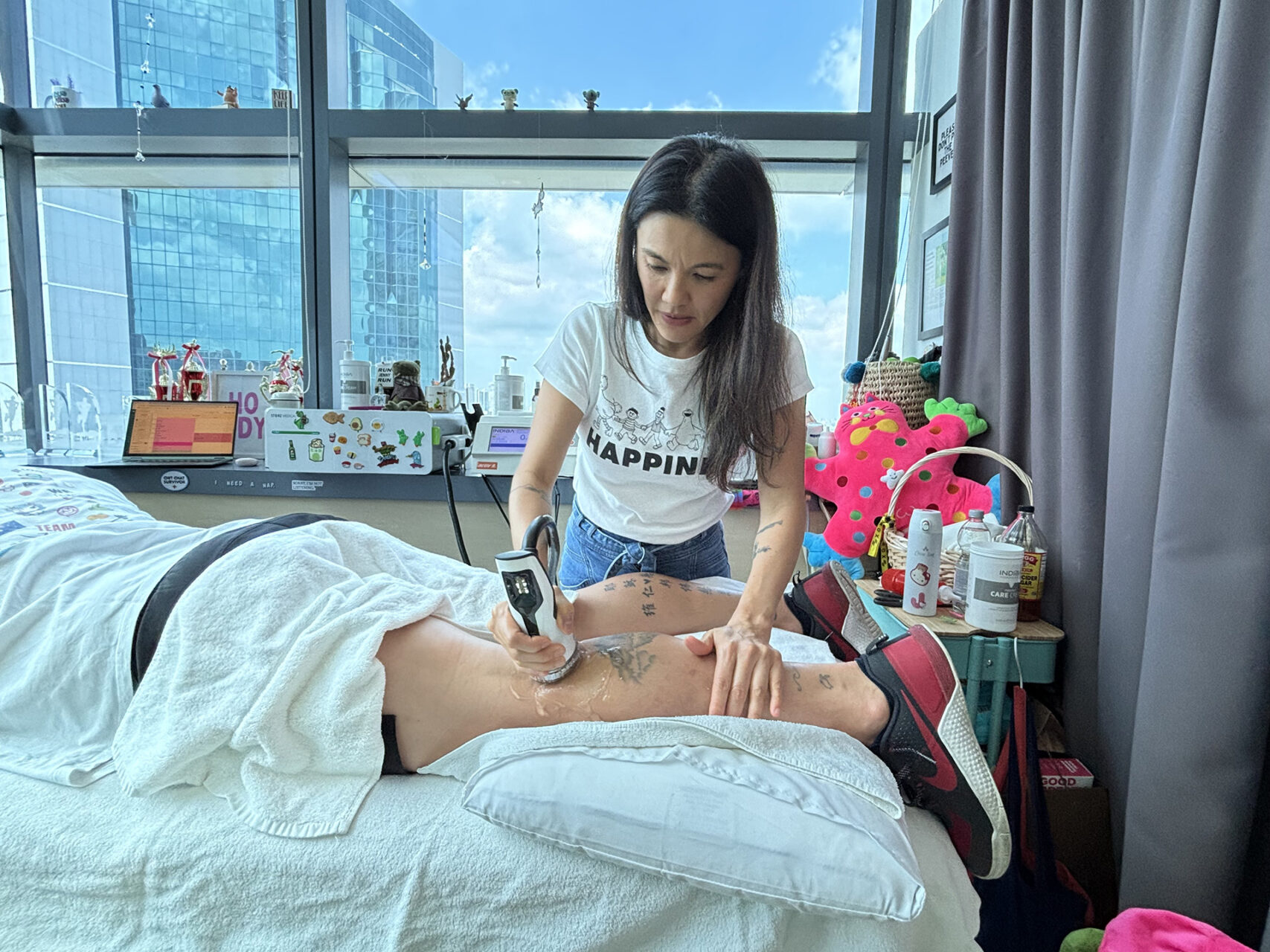
Rehabilitation and Physiotherapy for Hamstring Tears
Rehabilitation for a hamstring tear injury is split into phases, aligned with the healing journey. In the acute stage of pain management, gentle mobility and activation of surrounding muscles help maintain circulation and reduce stiffness. As healing progresses, eccentric hamstring exercises such as Nordic curls are introduced to build strength and resilience. Later phases incorporate agility, proprioception, and sport-specific drills to return to full function.
Advanced programs often include Clinical Pilates to reinforce core stability and balanced movement patterns, as well as reduce the strain on the hamstrings. Adjunct modalities from INDIBA to EMTT are incorporated into these programs to accelerate healing and minimise scar tissue. Physiotherapists look beyond the injured site and strengthen the glutes, hips and core to protect the entire kinetic chain. The combination of modern modalities with evidence-based physiotherapy ensures better and more sustainable outcomes.
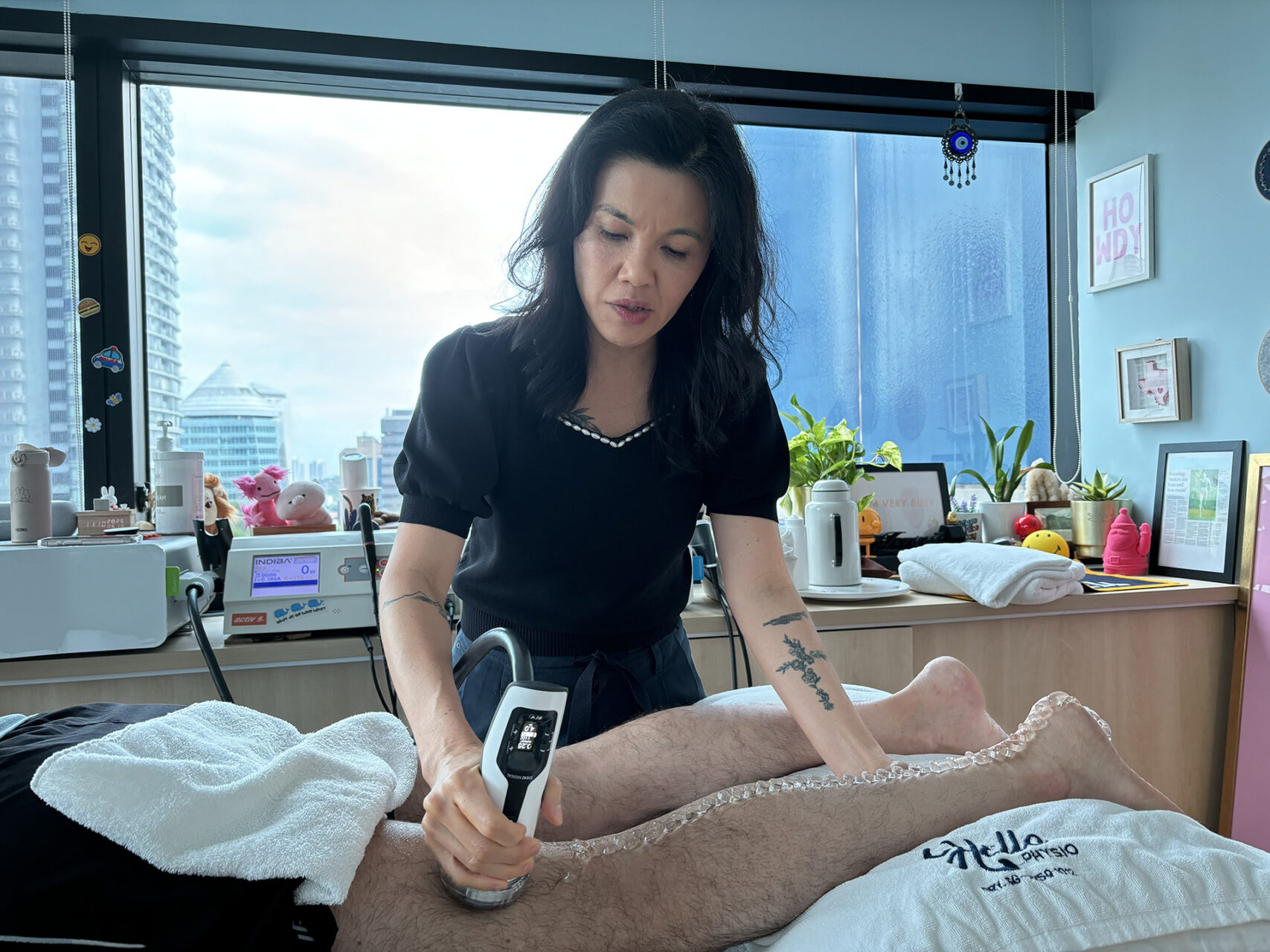
Complications of Hamstring Injuries
If not appropriately managed, hamstring injuries have a high risk of recurrence. Scar tissue can limit flexibility, and chronic hamstring tendinopathy can develop, causing persistent pain. In some cases, nerve entrapment can occur when scar tissue compresses the sciatic nerve.
Inadequate rehabilitation also increases the risk of reinjury, prolonging recovery and compromising long-term mobility and function.
Preventing Hamstring Tears through Patient Education
Prevention strategies should focus on strengthening the back and thigh muscles, increasing flexibility, and addressing muscle imbalances. Including hamstring exercises in your training program is essential, especially if you participate in high-risk sports such as football, sprinting, or dance. A proper warm-up, attention to technique, and gradual progression of training loads can further reduce the risk of a pulled hamstring or more severe hamstring tears.
During rehabilitation, avoid activities that put excessive strain on the hamstring muscles, such as aggressive hip flexion or knee extension, until cleared by your healthcare provider. Following the return-to-play guidelines and your physiotherapist’s advice will help prevent reinjury and support recovery.

Outlook and Long-Term Knee and Hip Health
Most patients recover fully from a hamstring tear with proper treatment and by adhering to a rehabilitation program. But be vigilant. Even after healing, the risk of re-injury remains high if training loads are increased too quickly or biomechanical issues are not properly addressed.
At HelloPhysio, we understand the physical and emotional impact of a hamstring tear. Whether you have a sharp pain from a recent injury or long-term symptoms, our physiotherapists combine advanced diagnostics, targeted exercises, and modern modalities to create personalized recovery plans.
Don’t let a hamstring tear hold you back. Contact HelloPhysio today to book a consultation and regain pain-free movement and strength.

